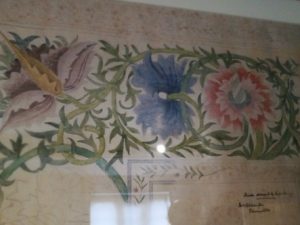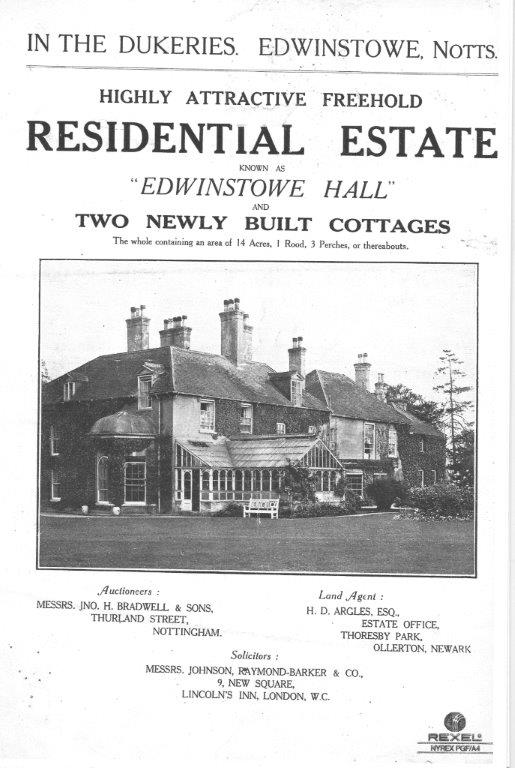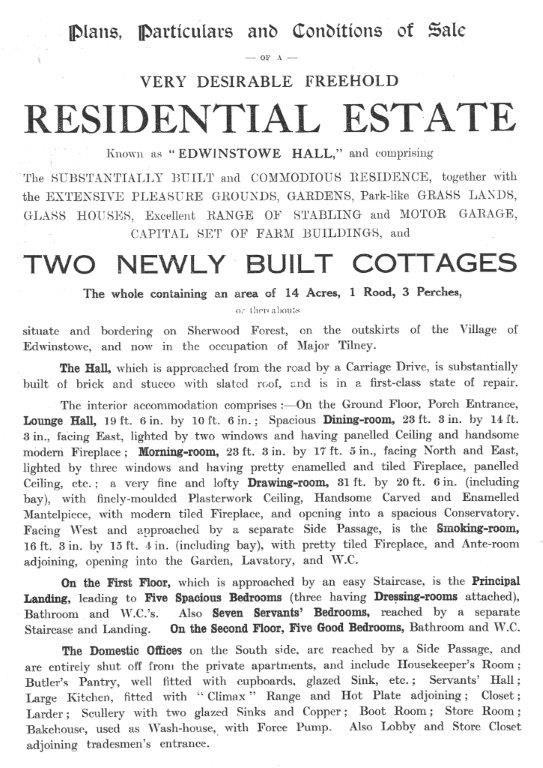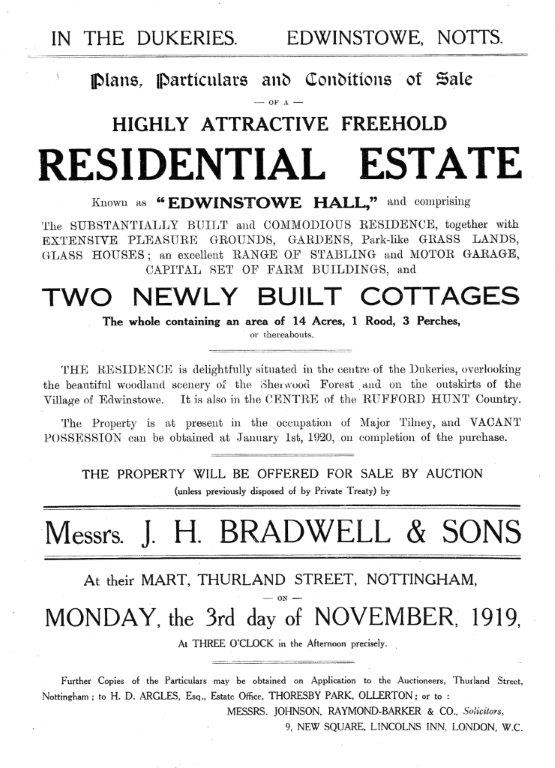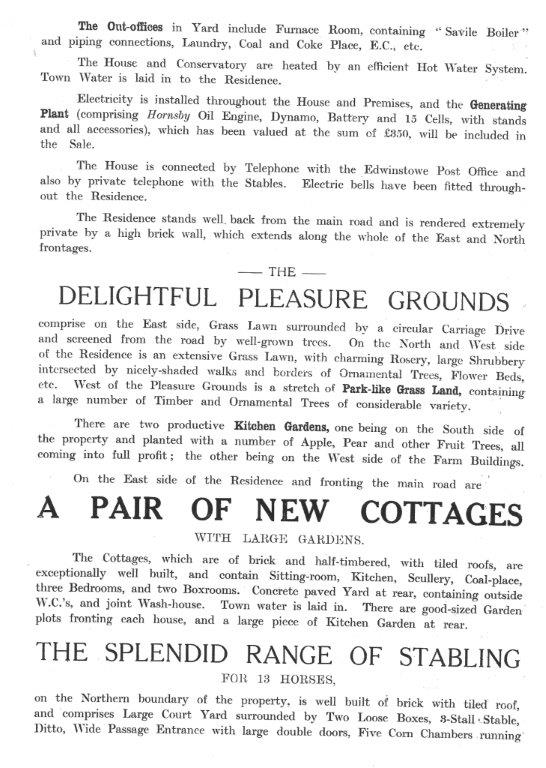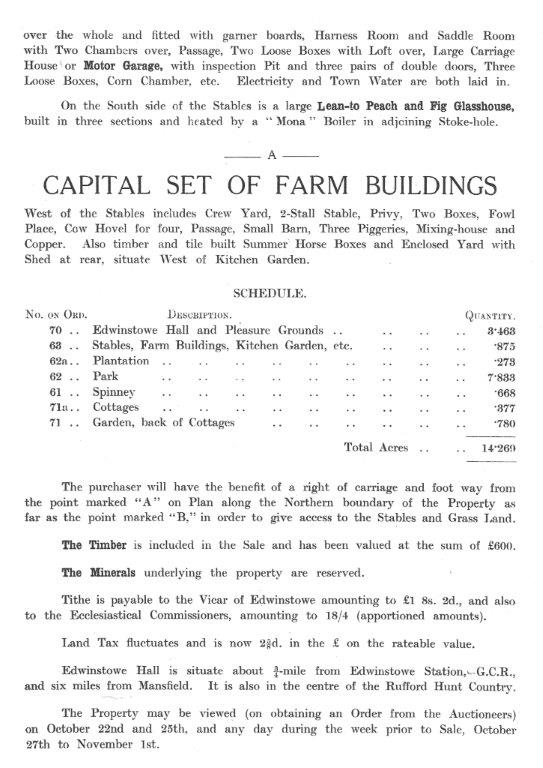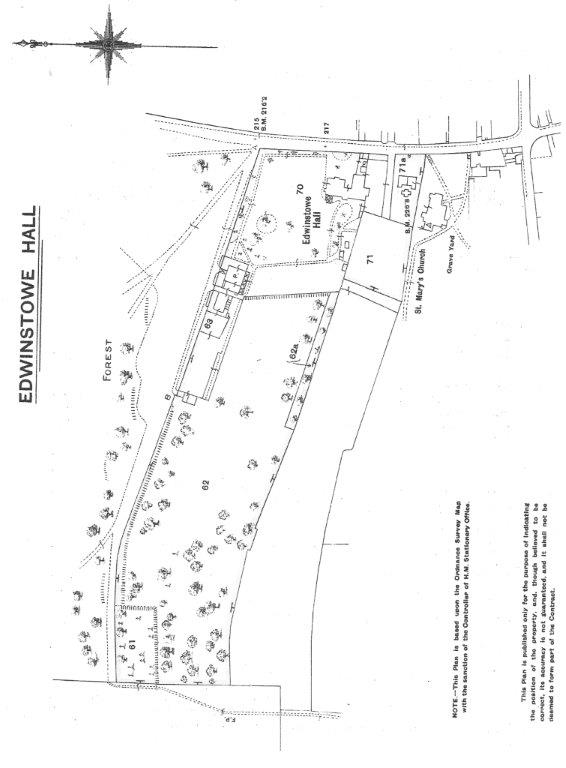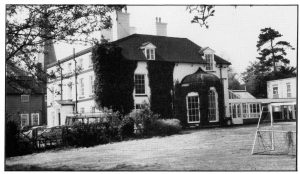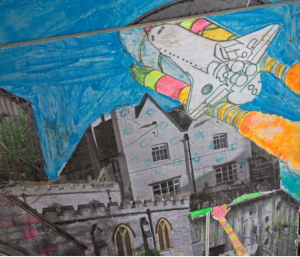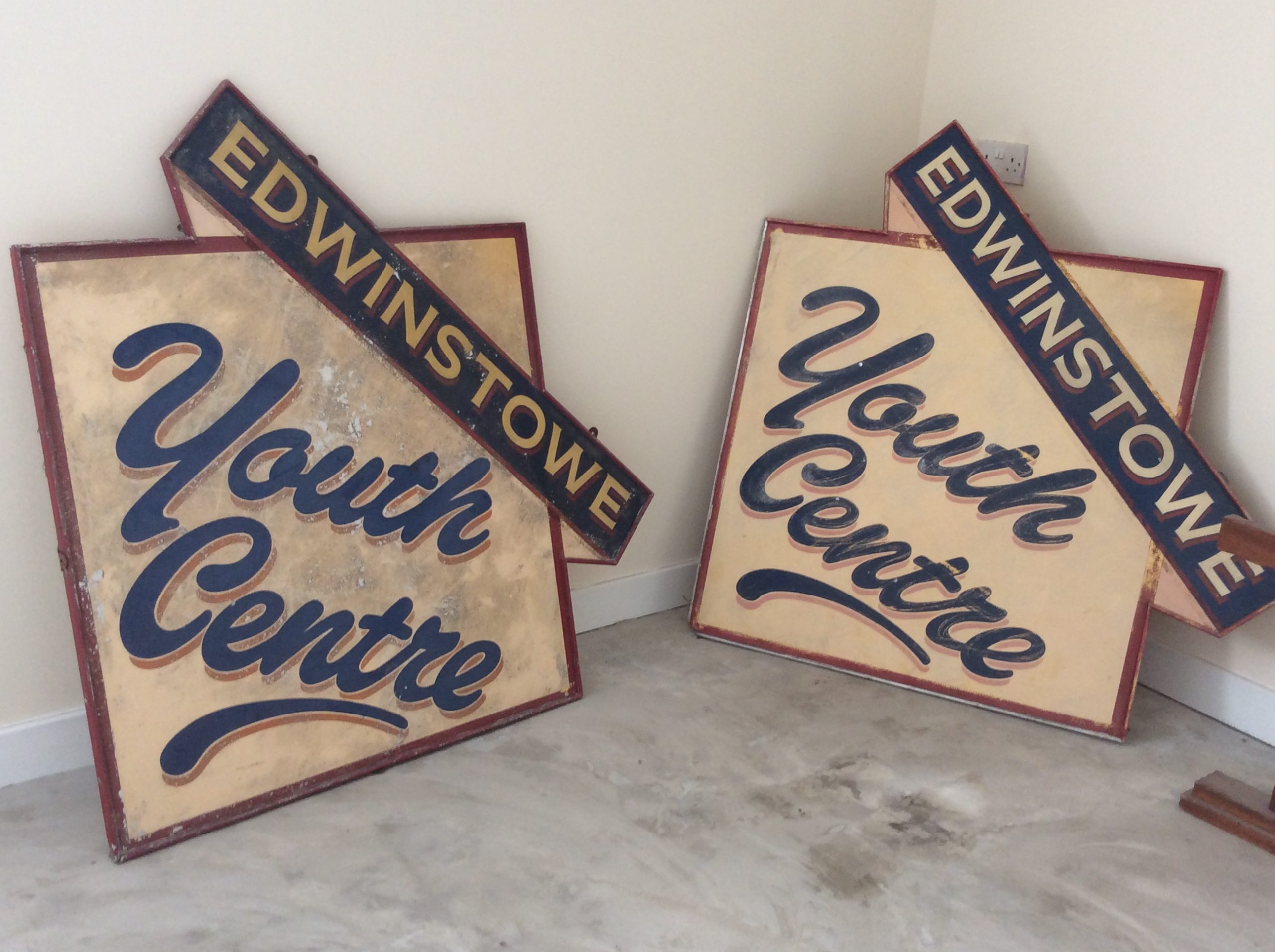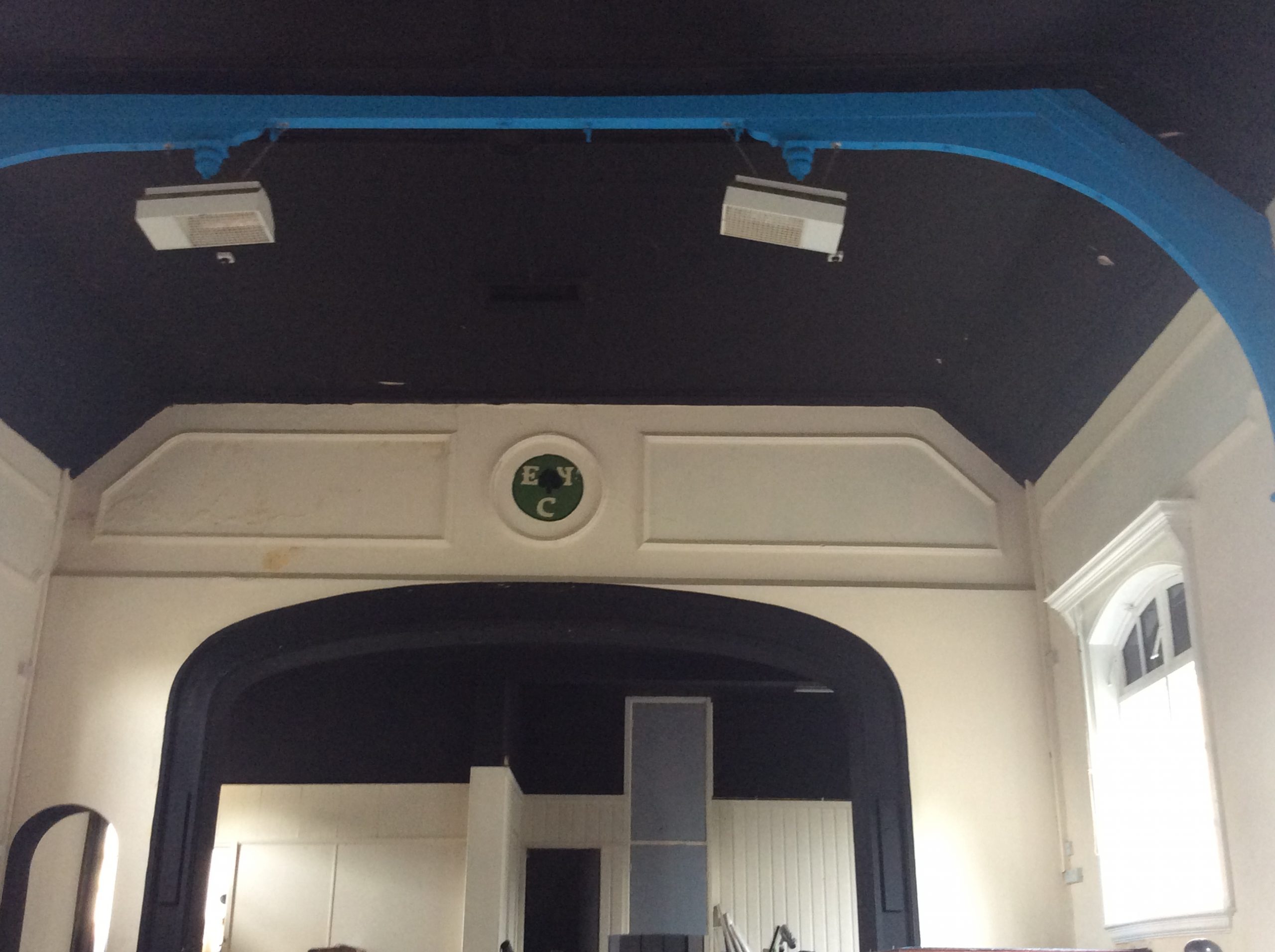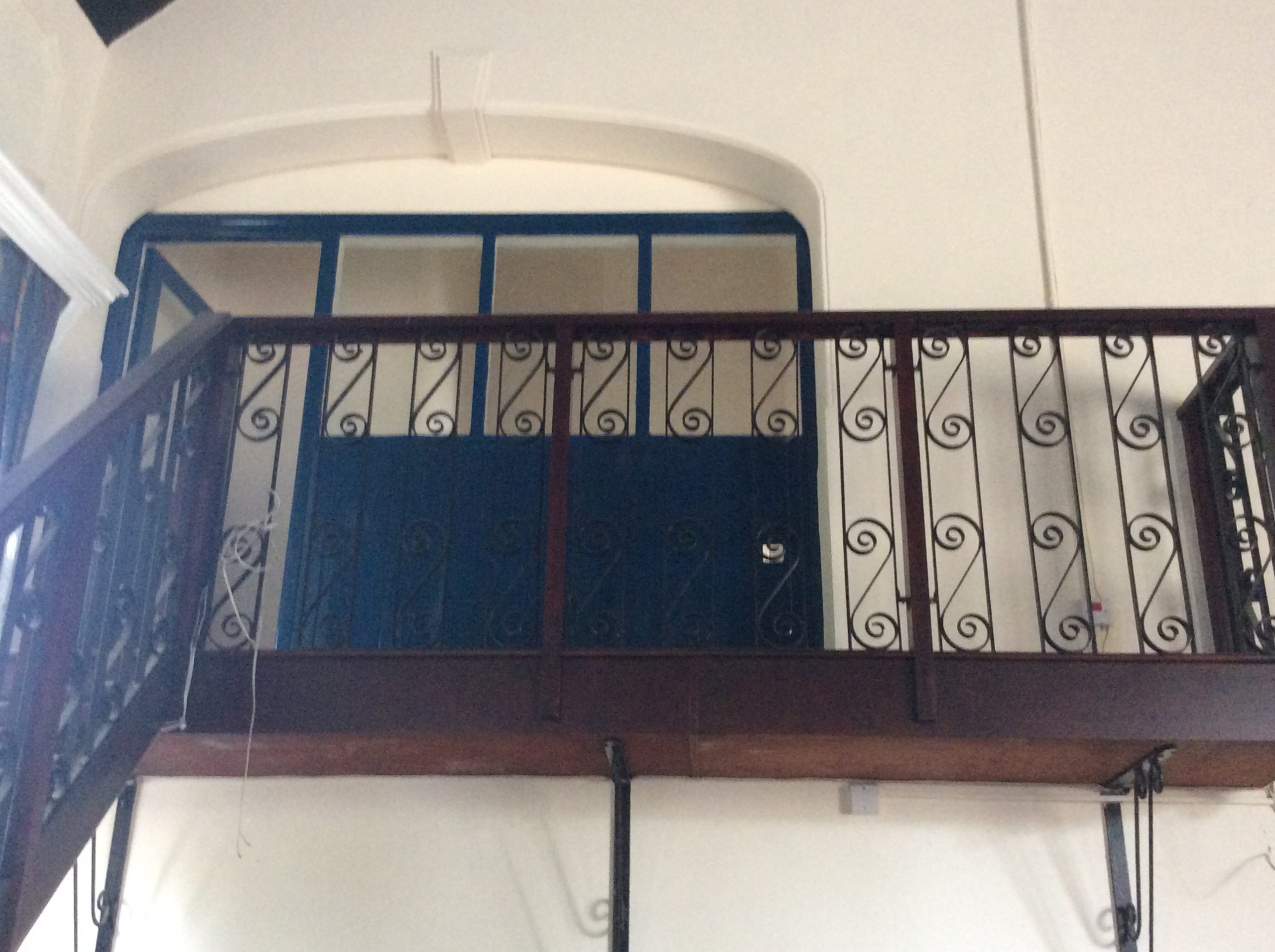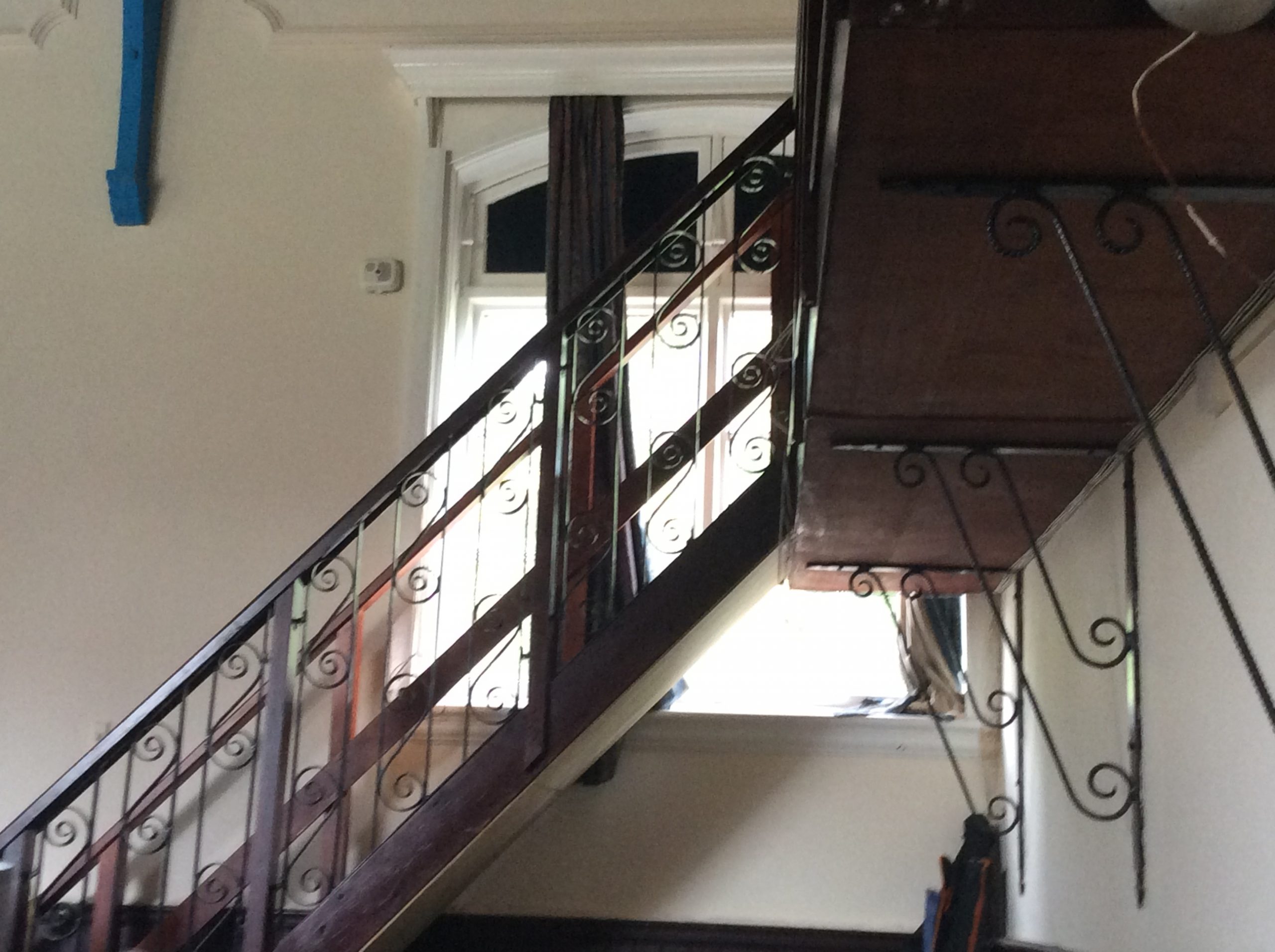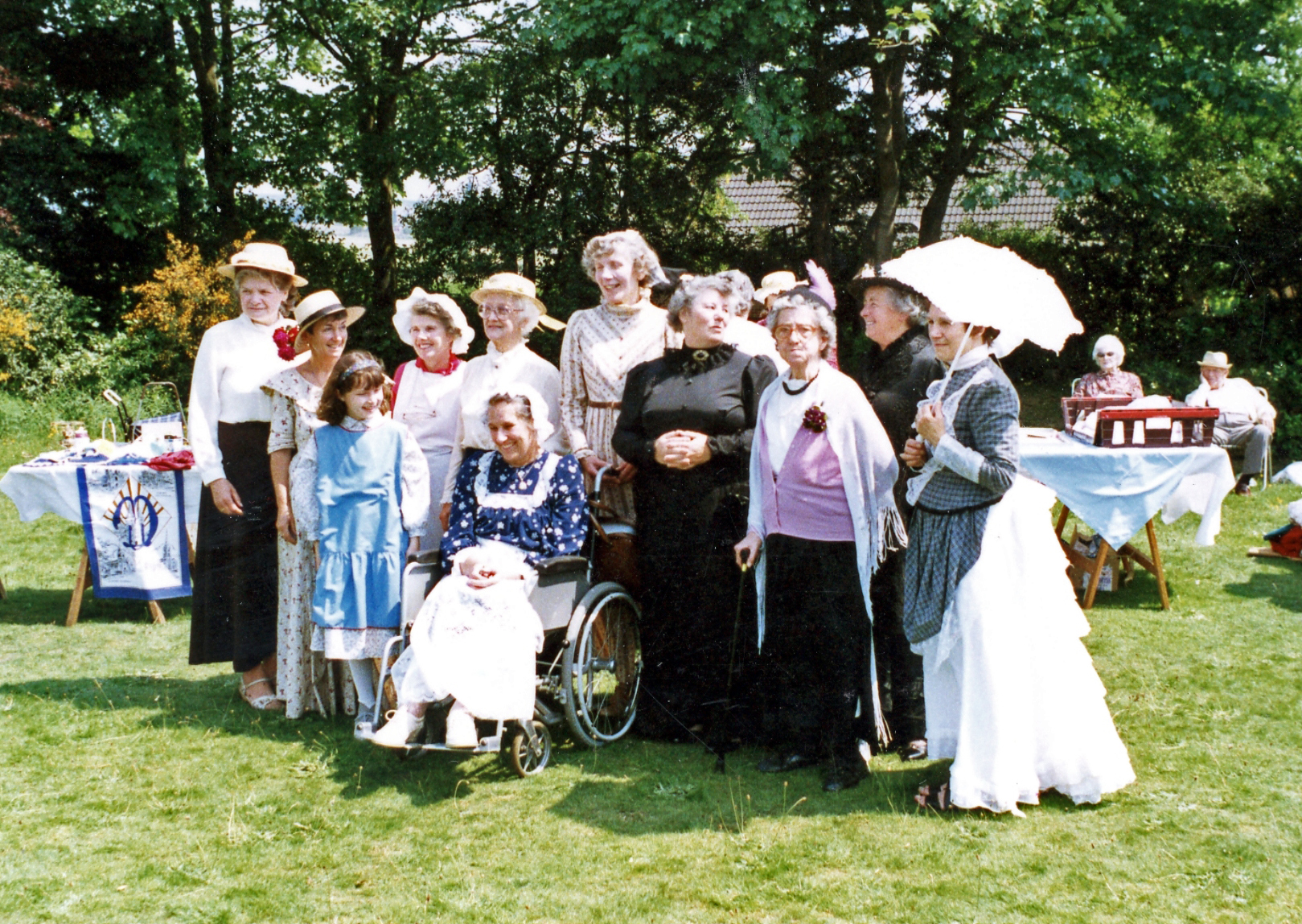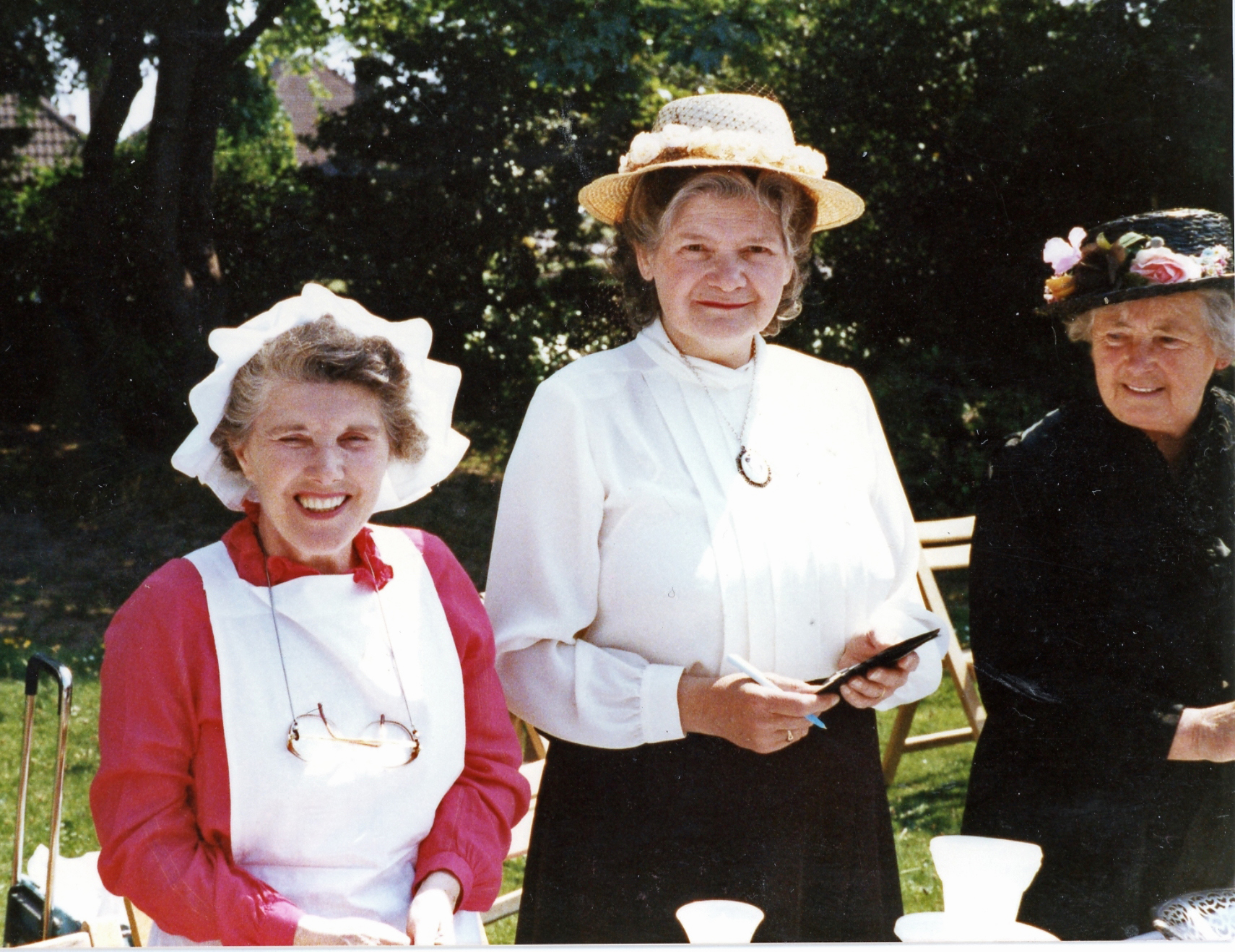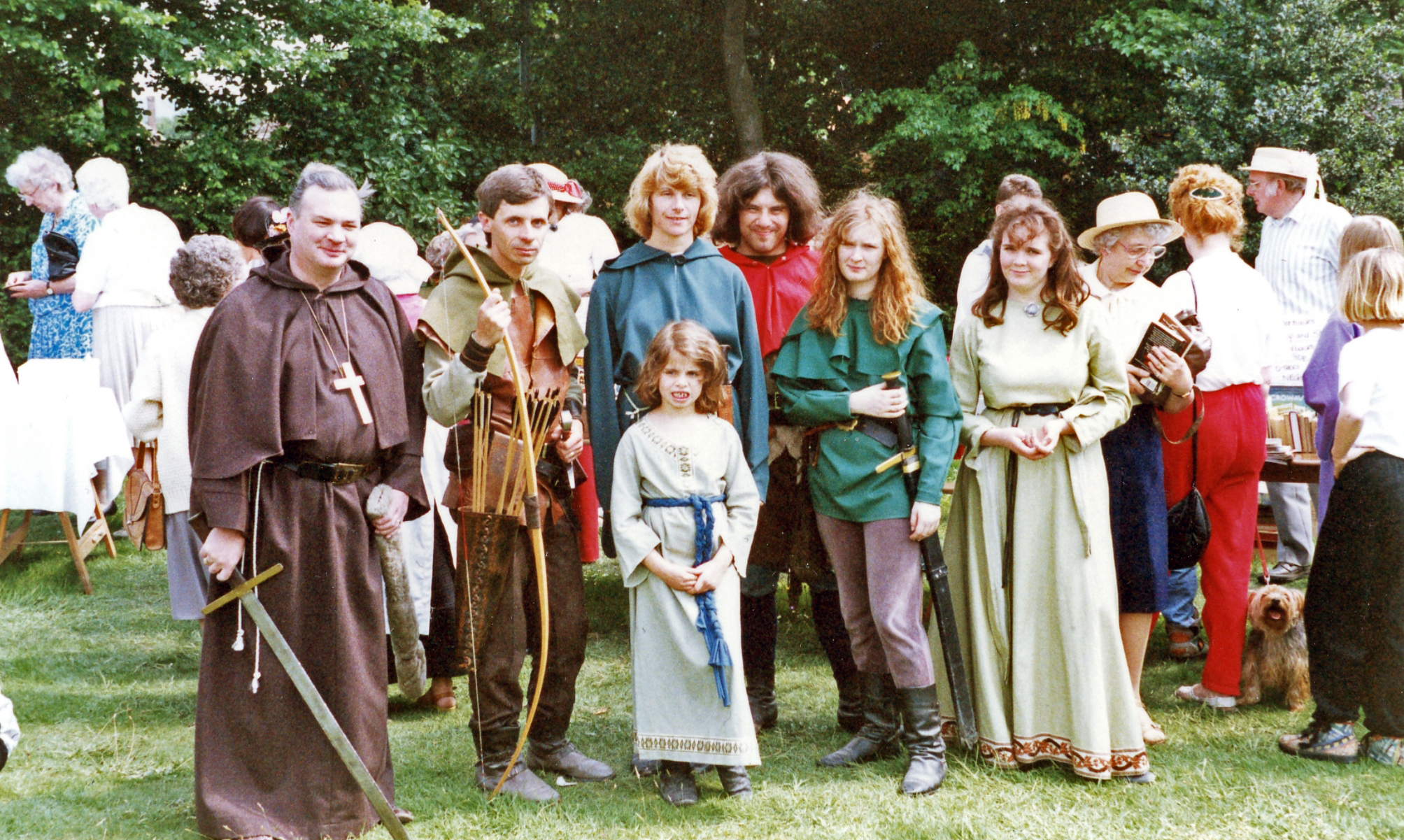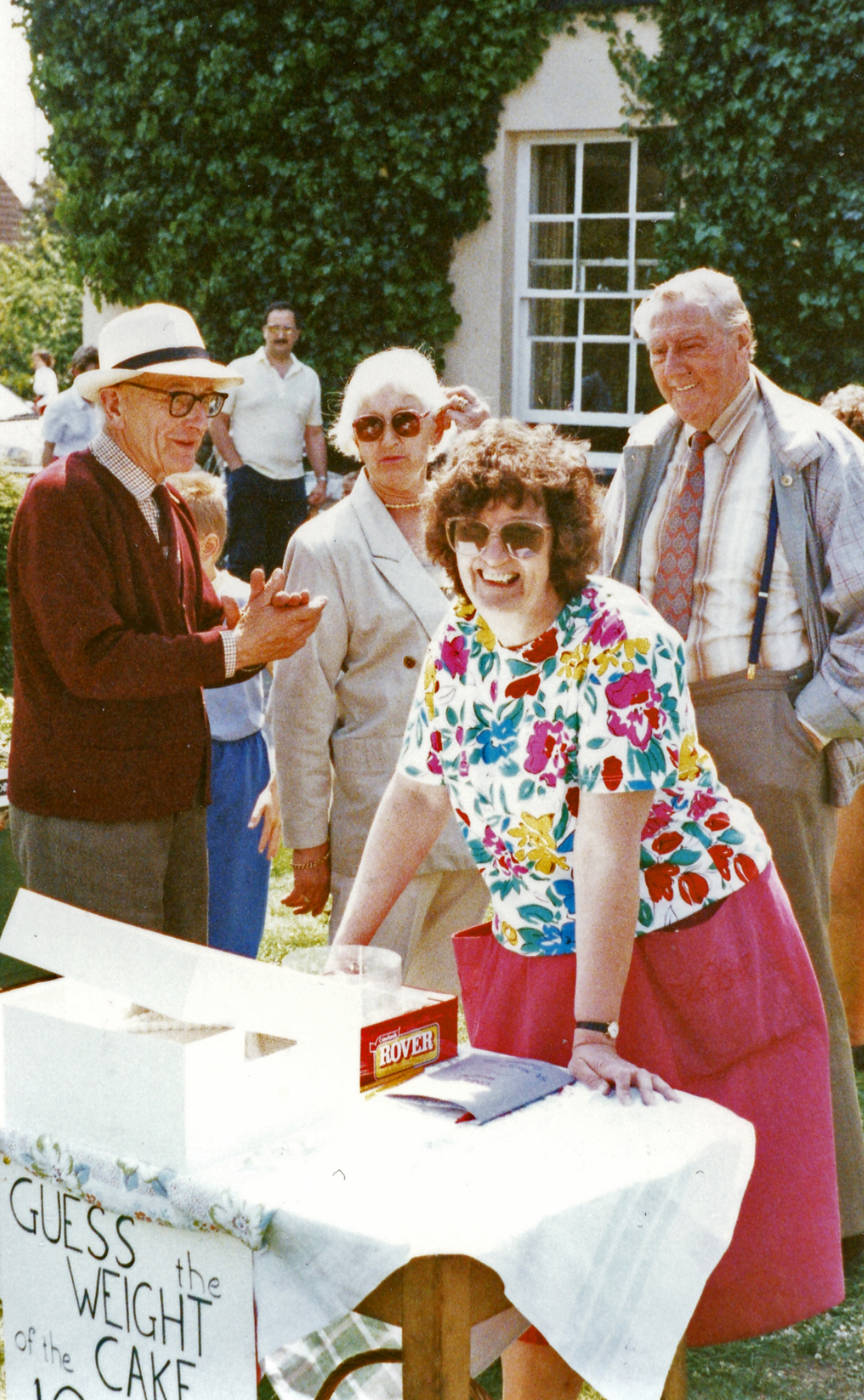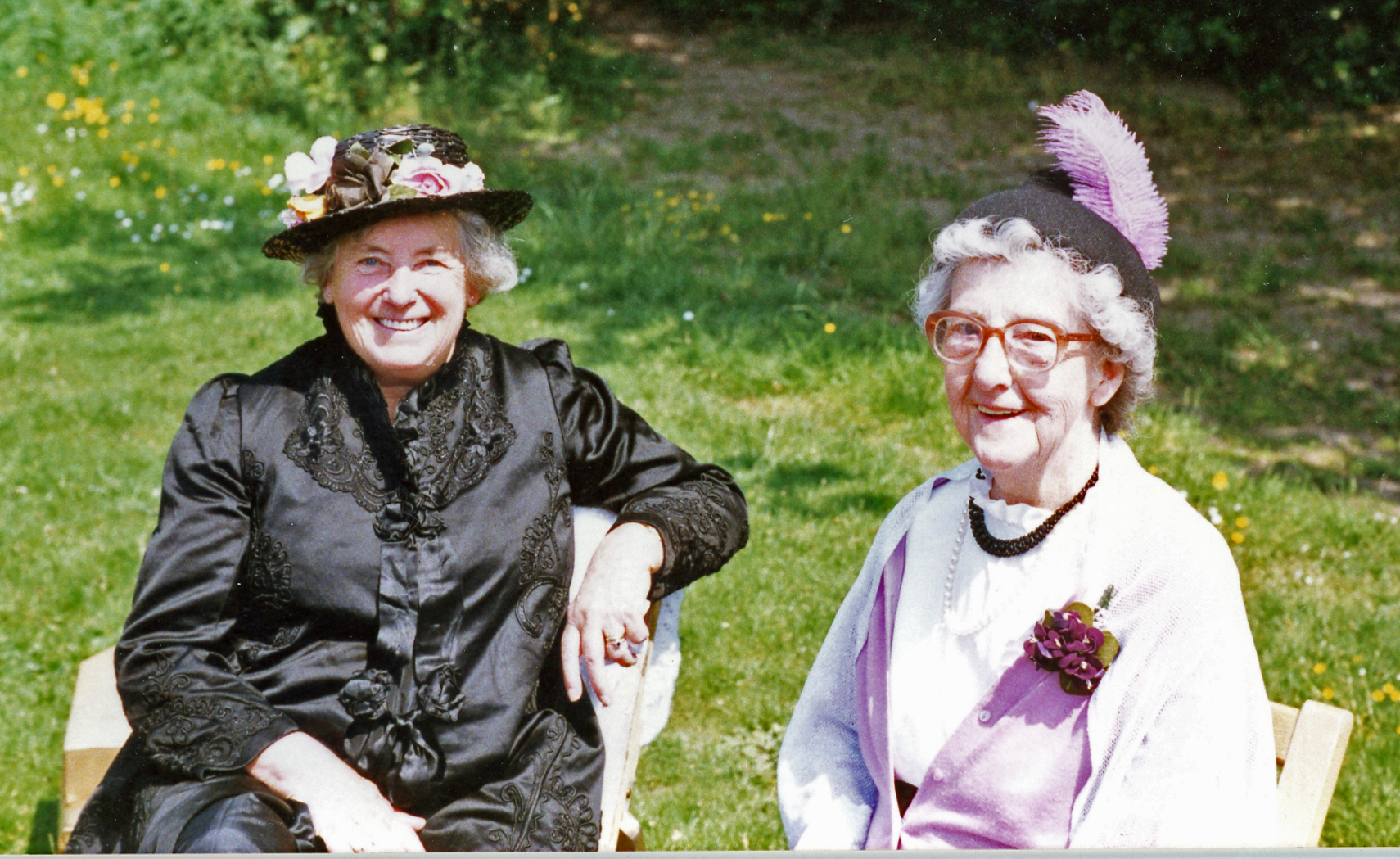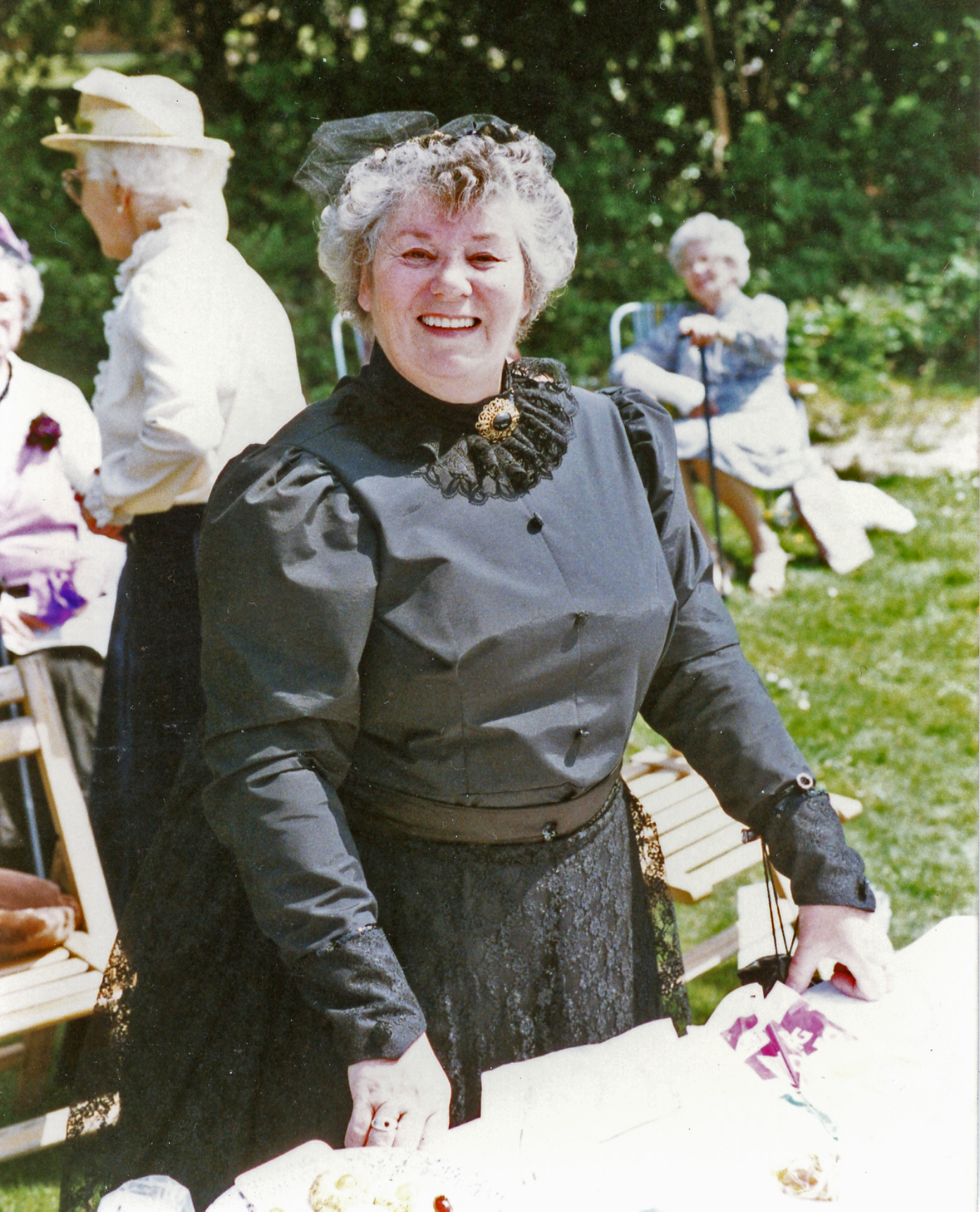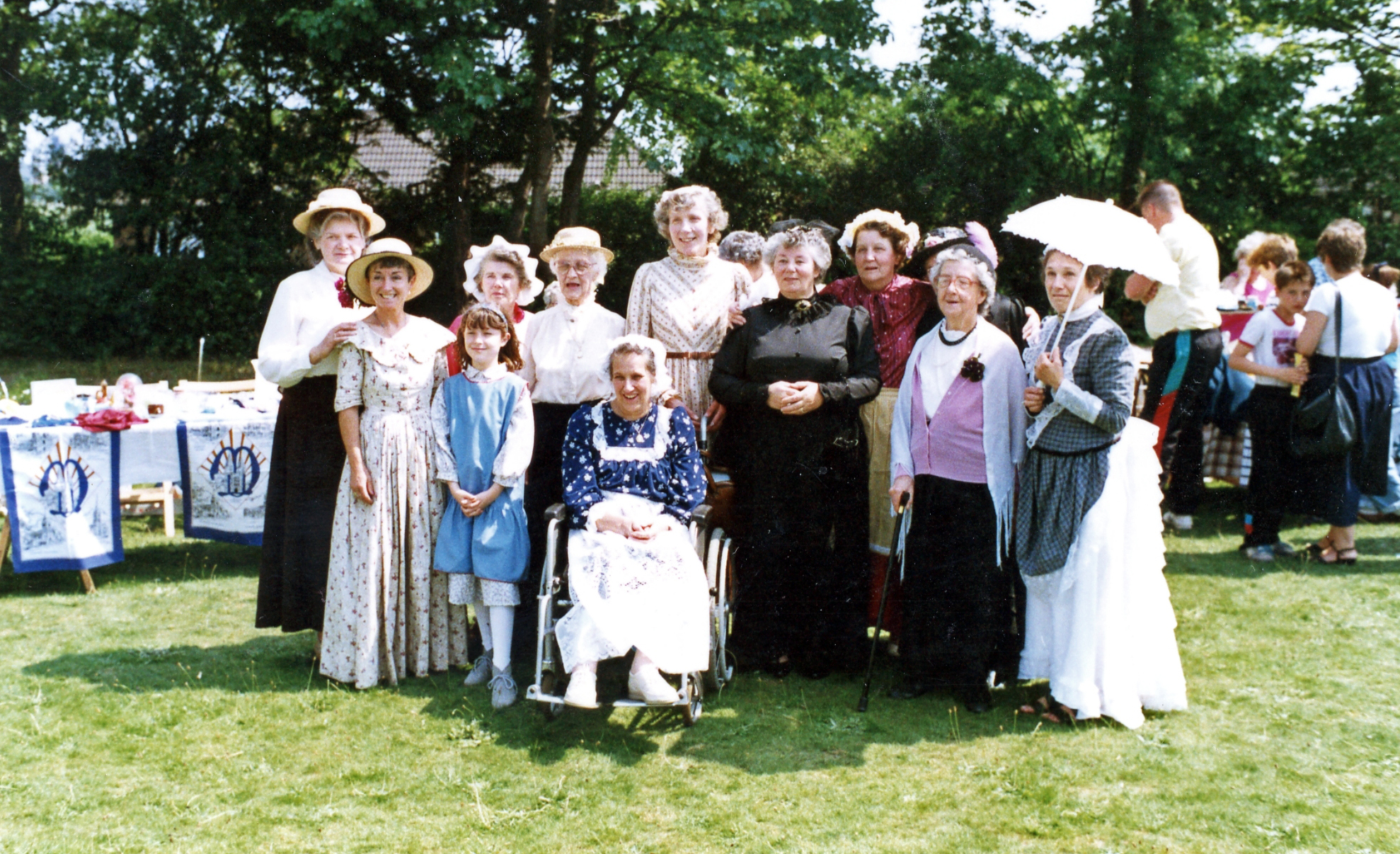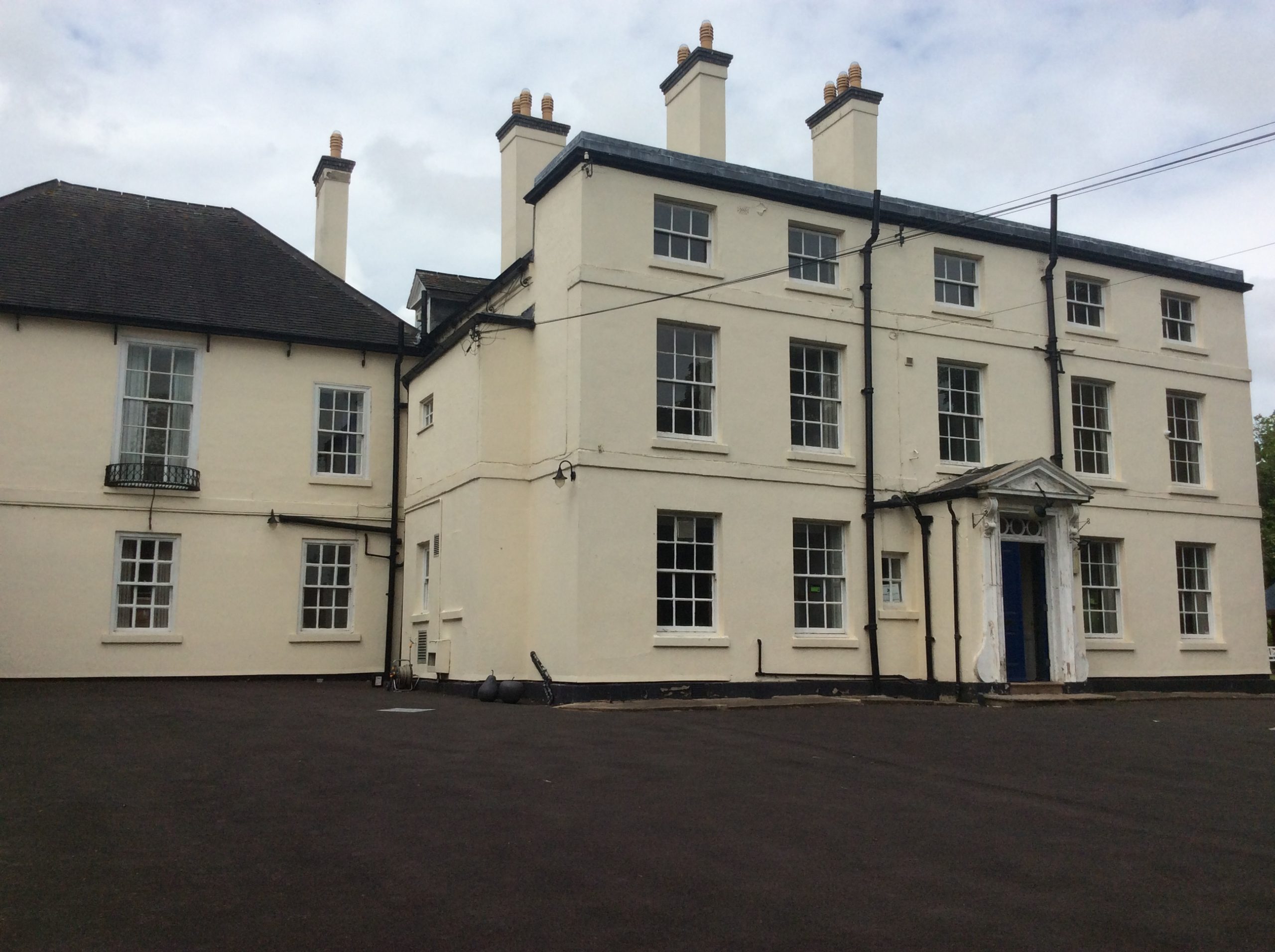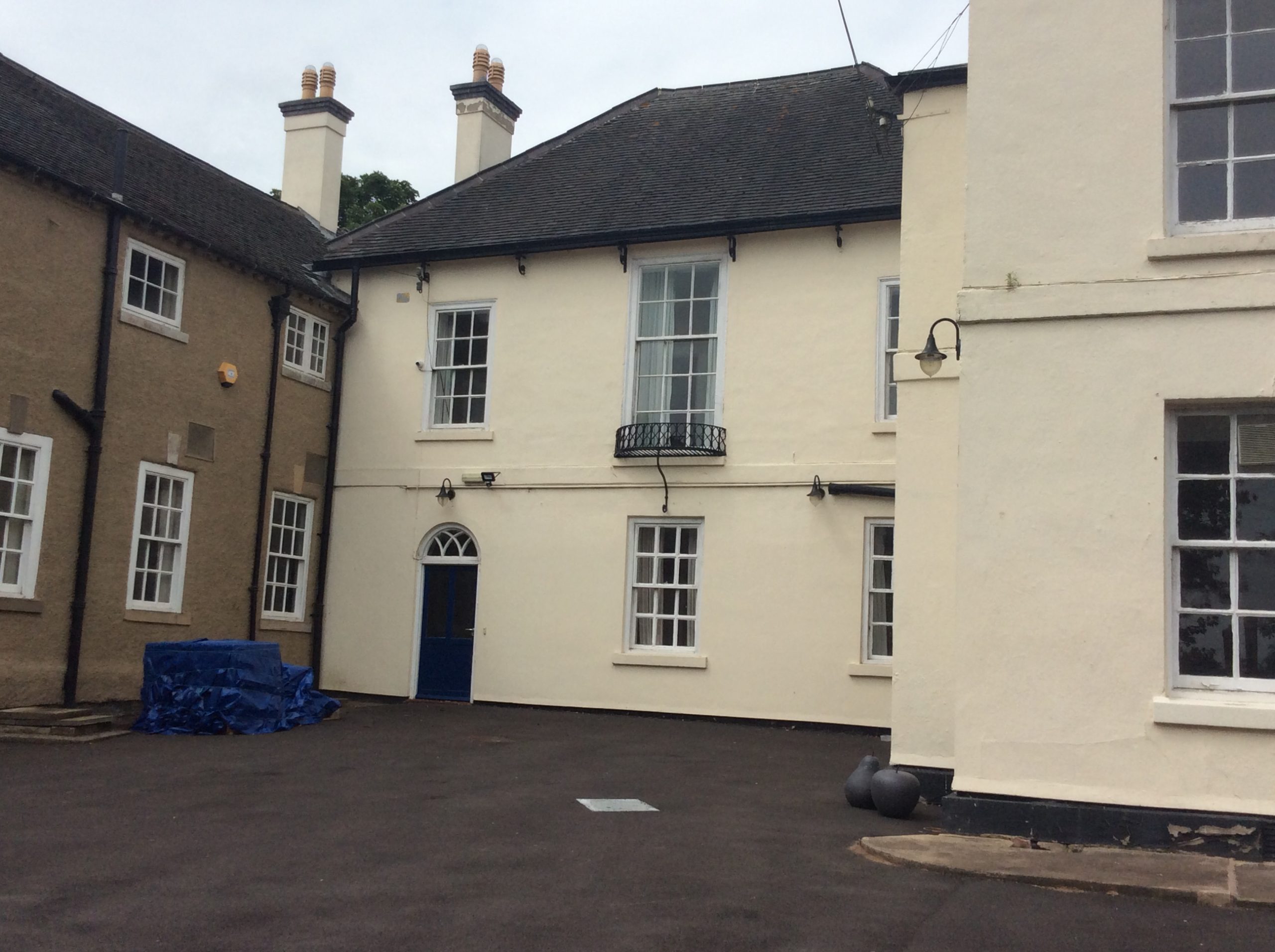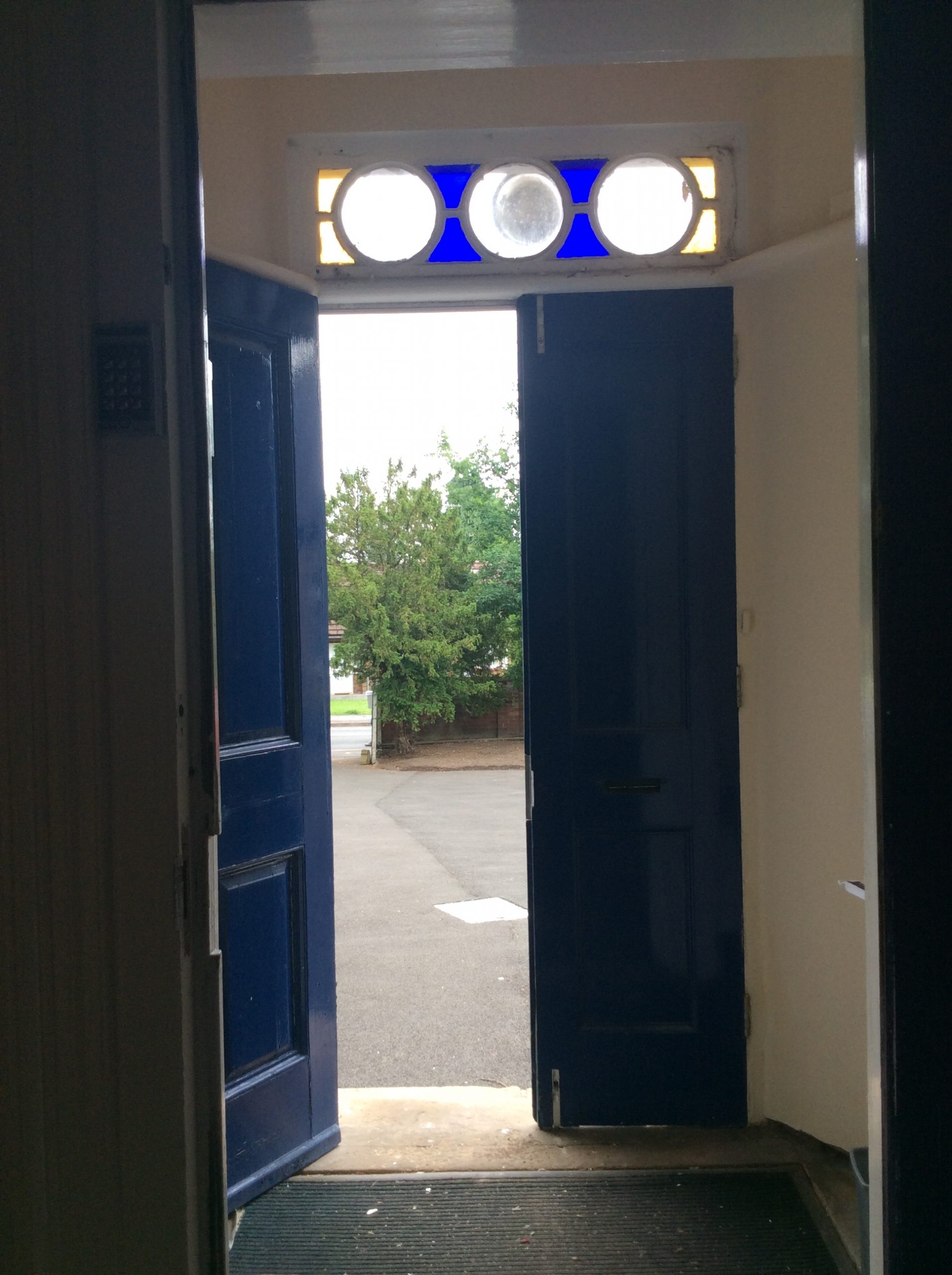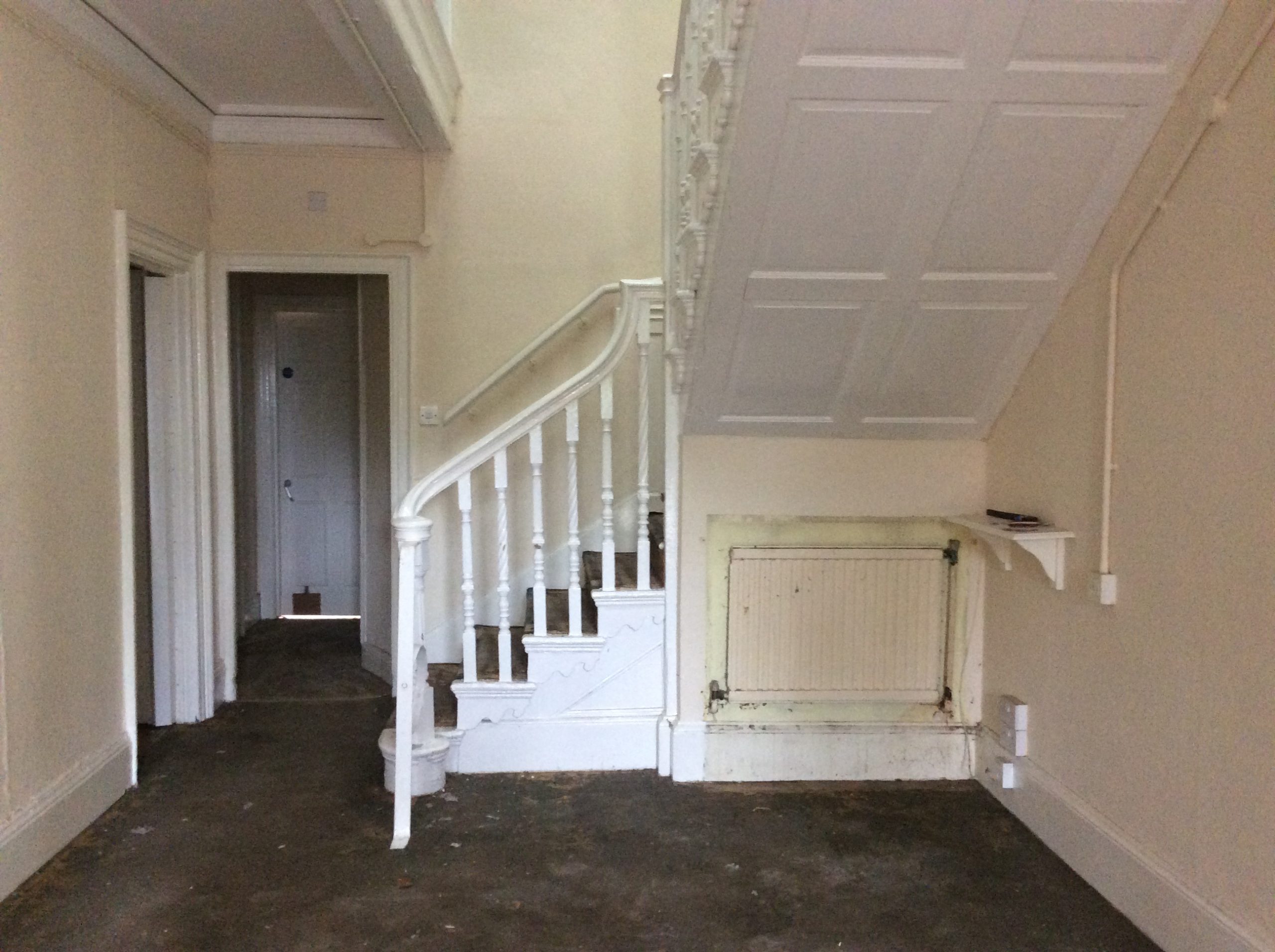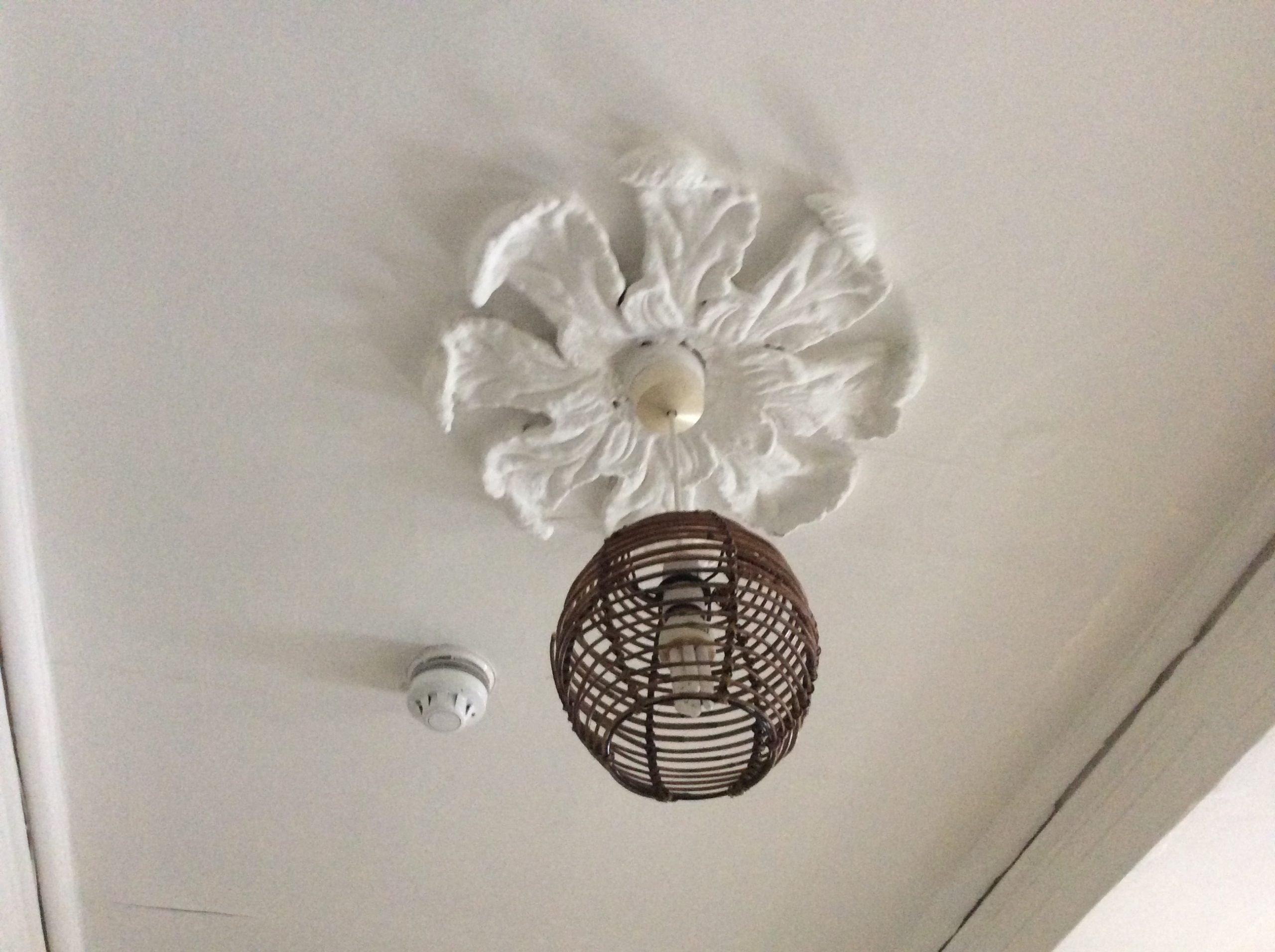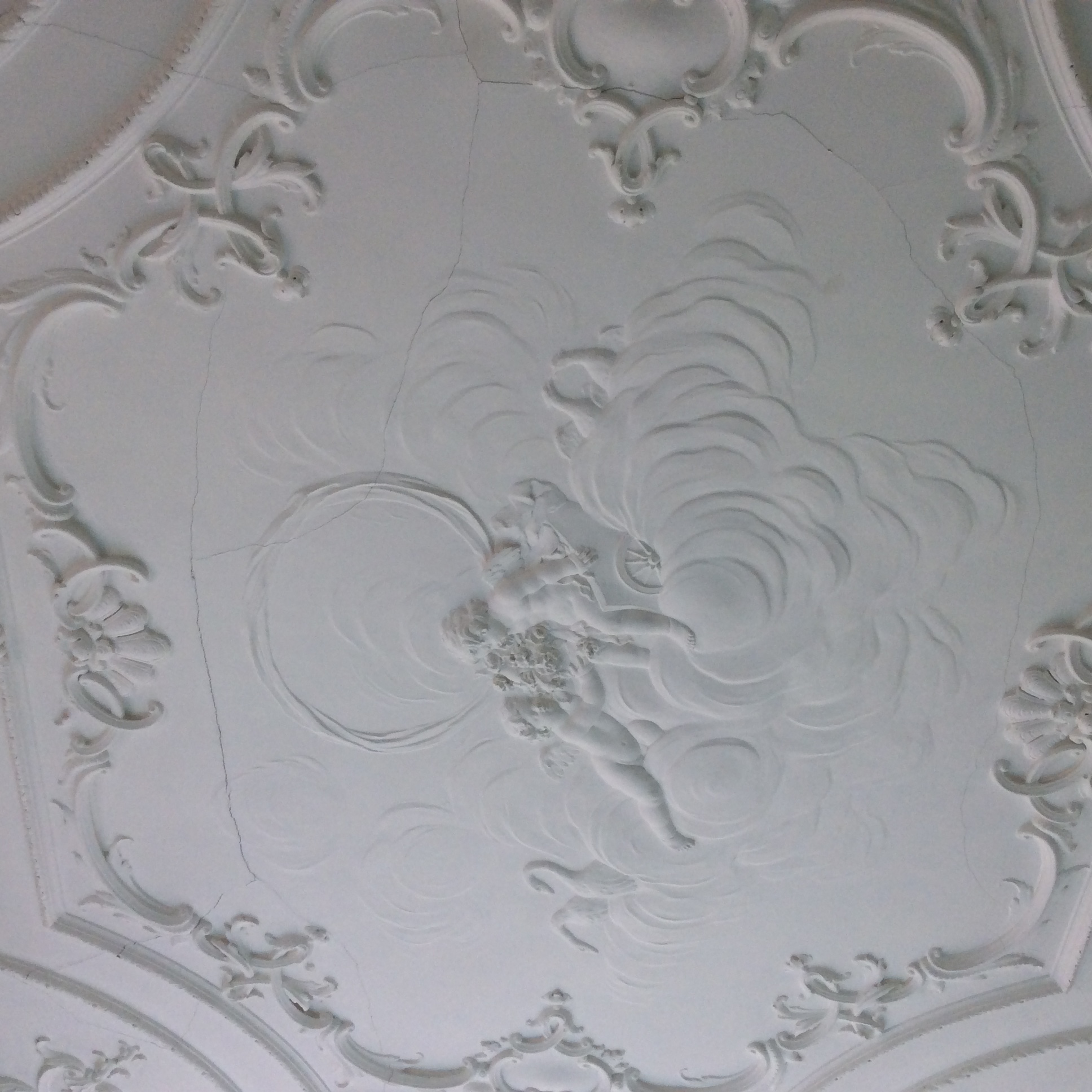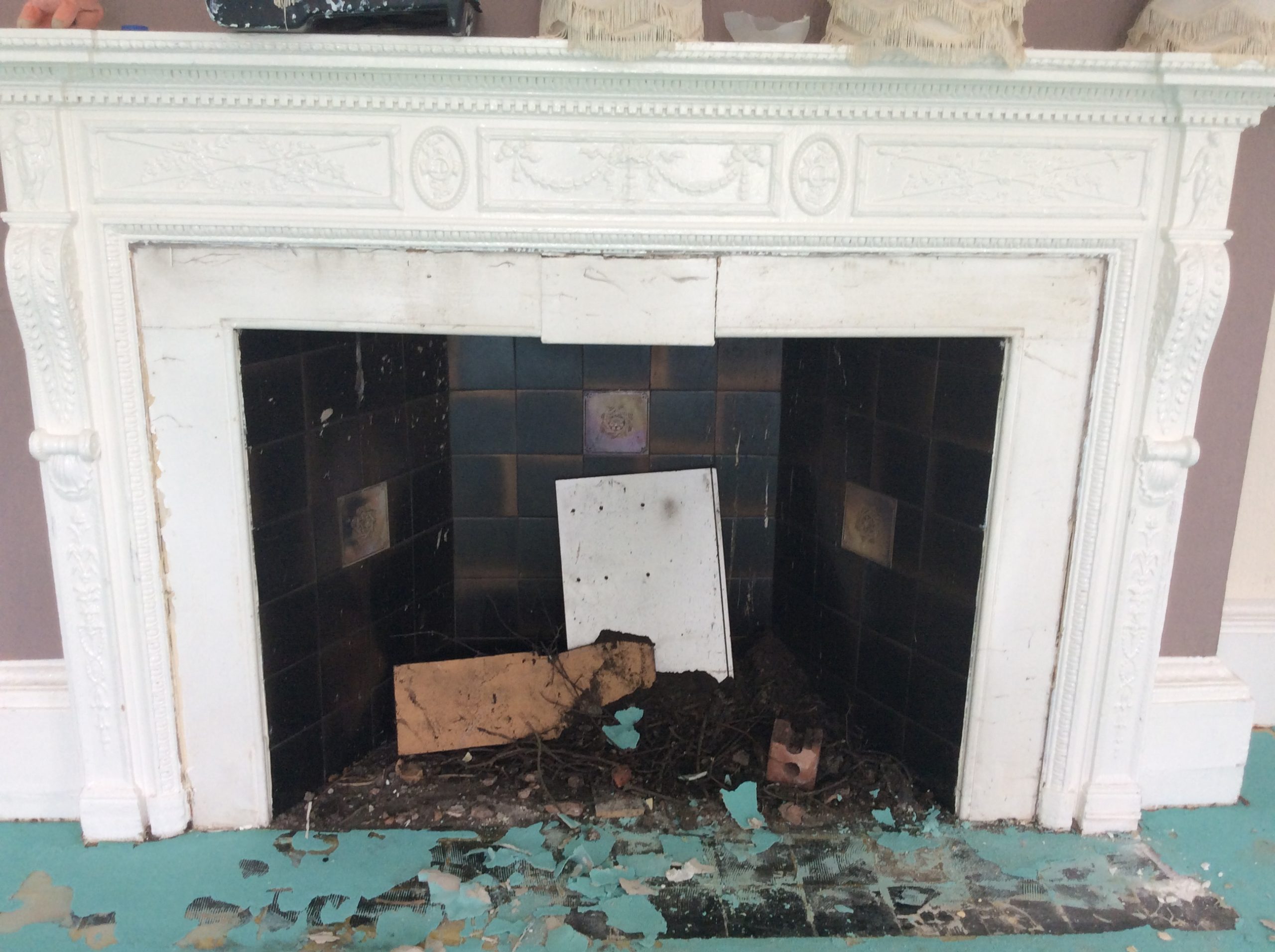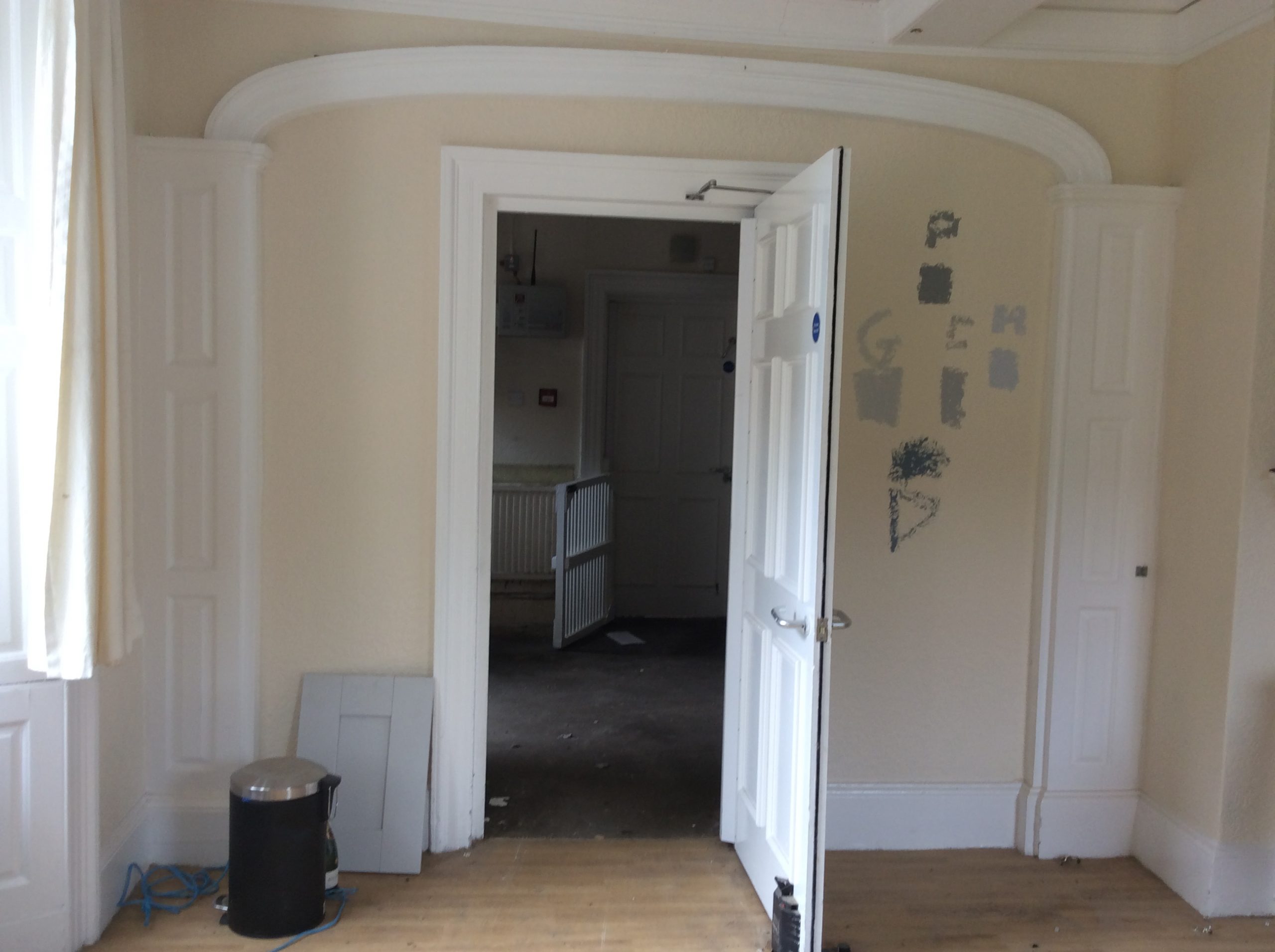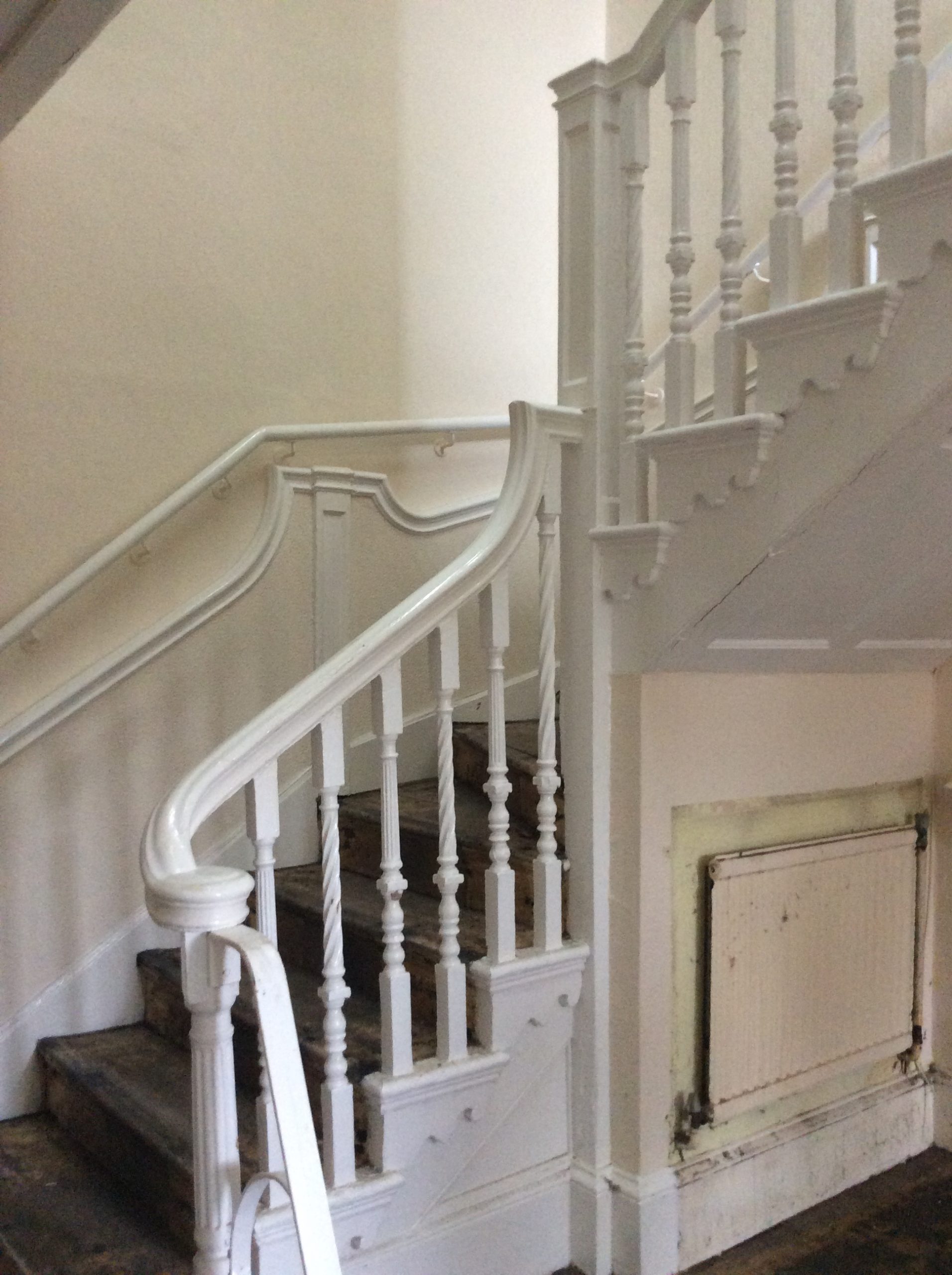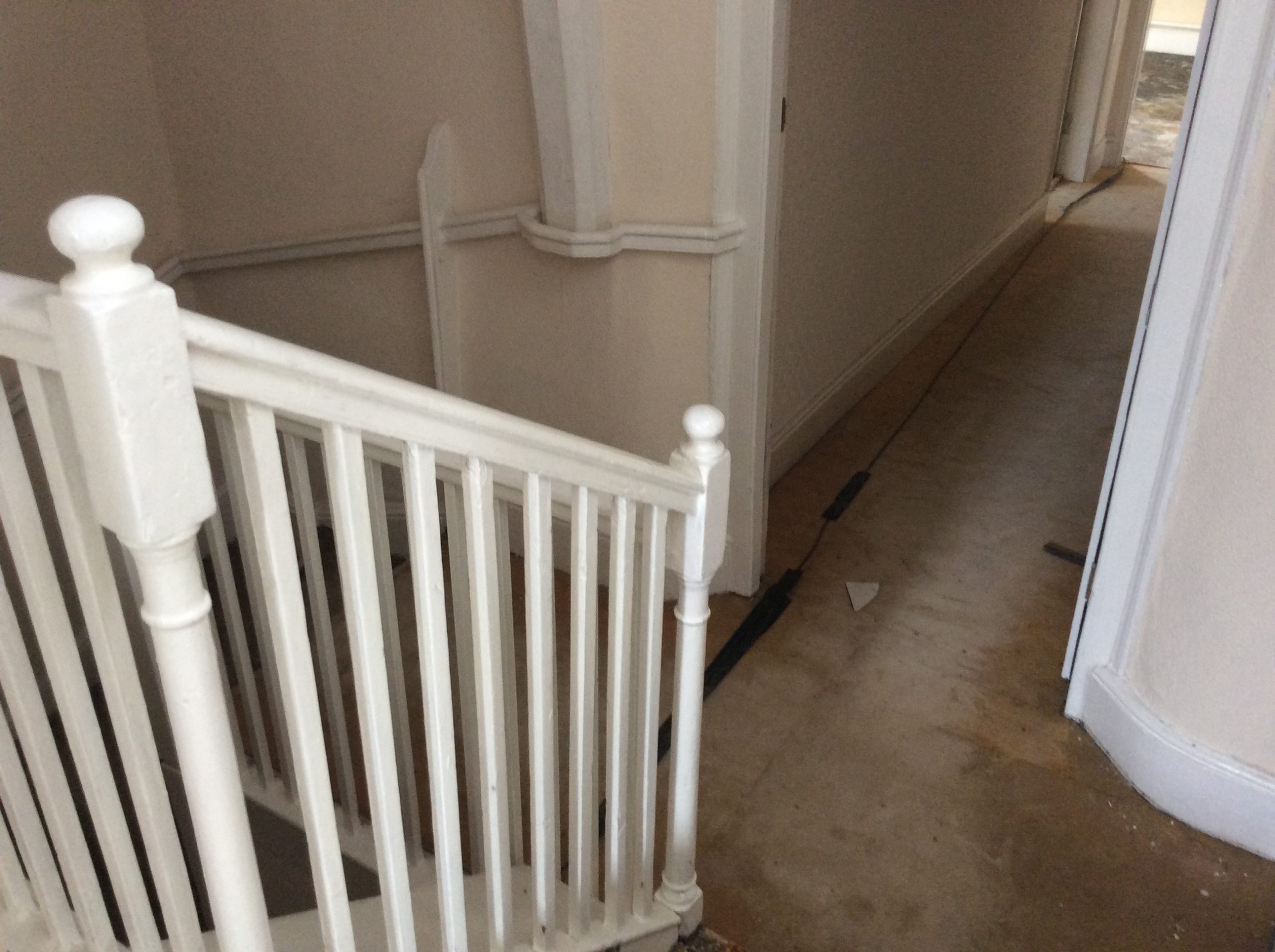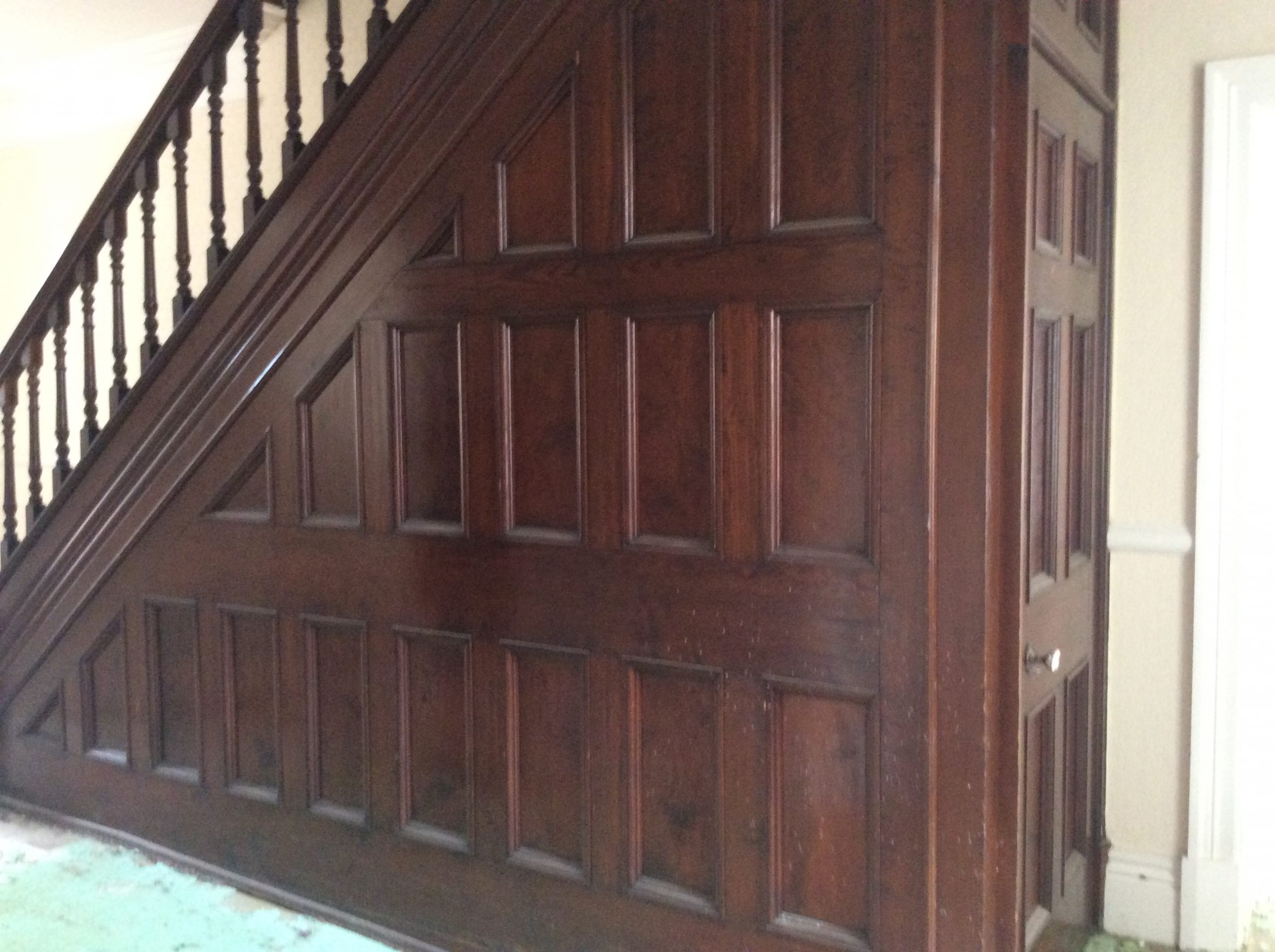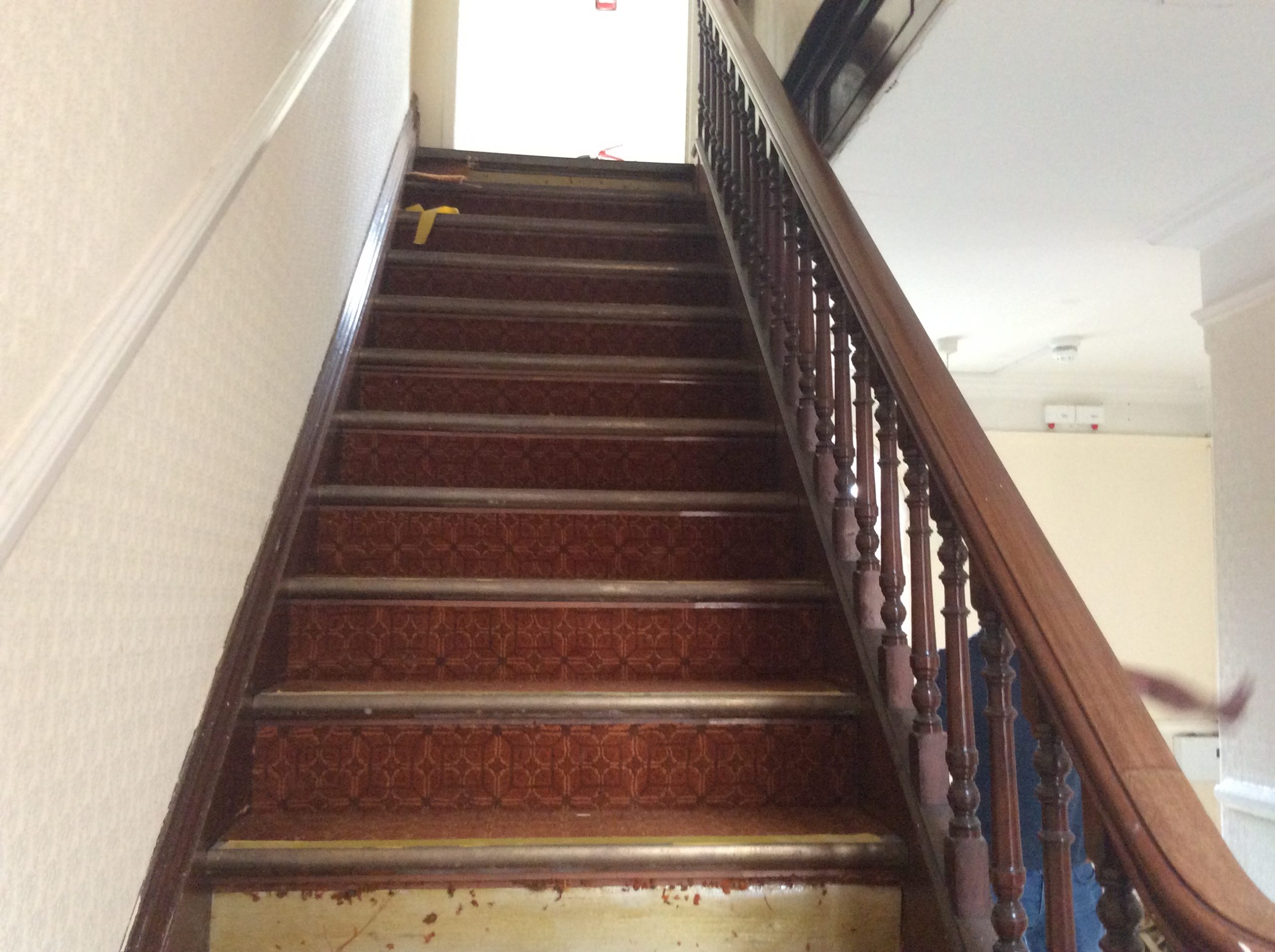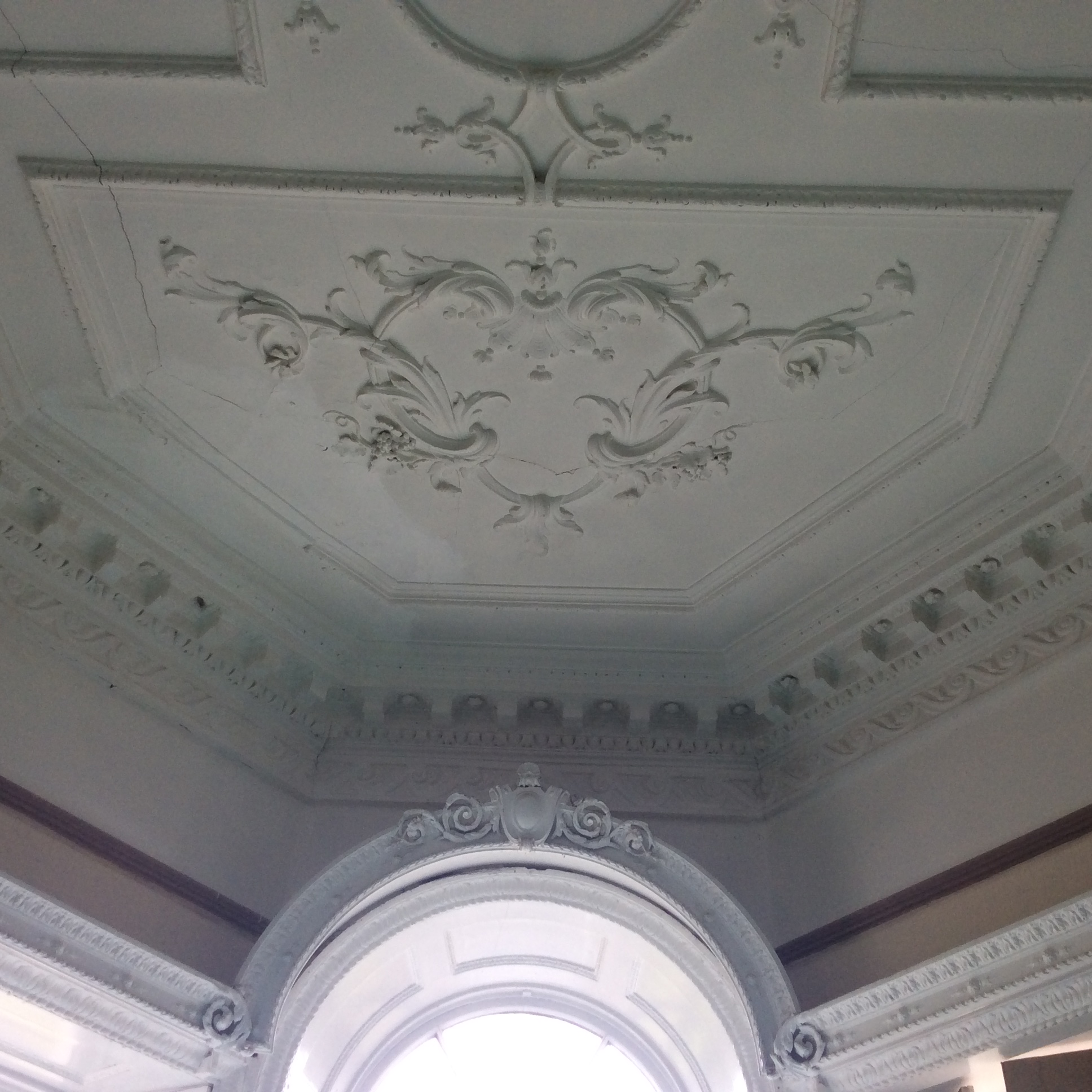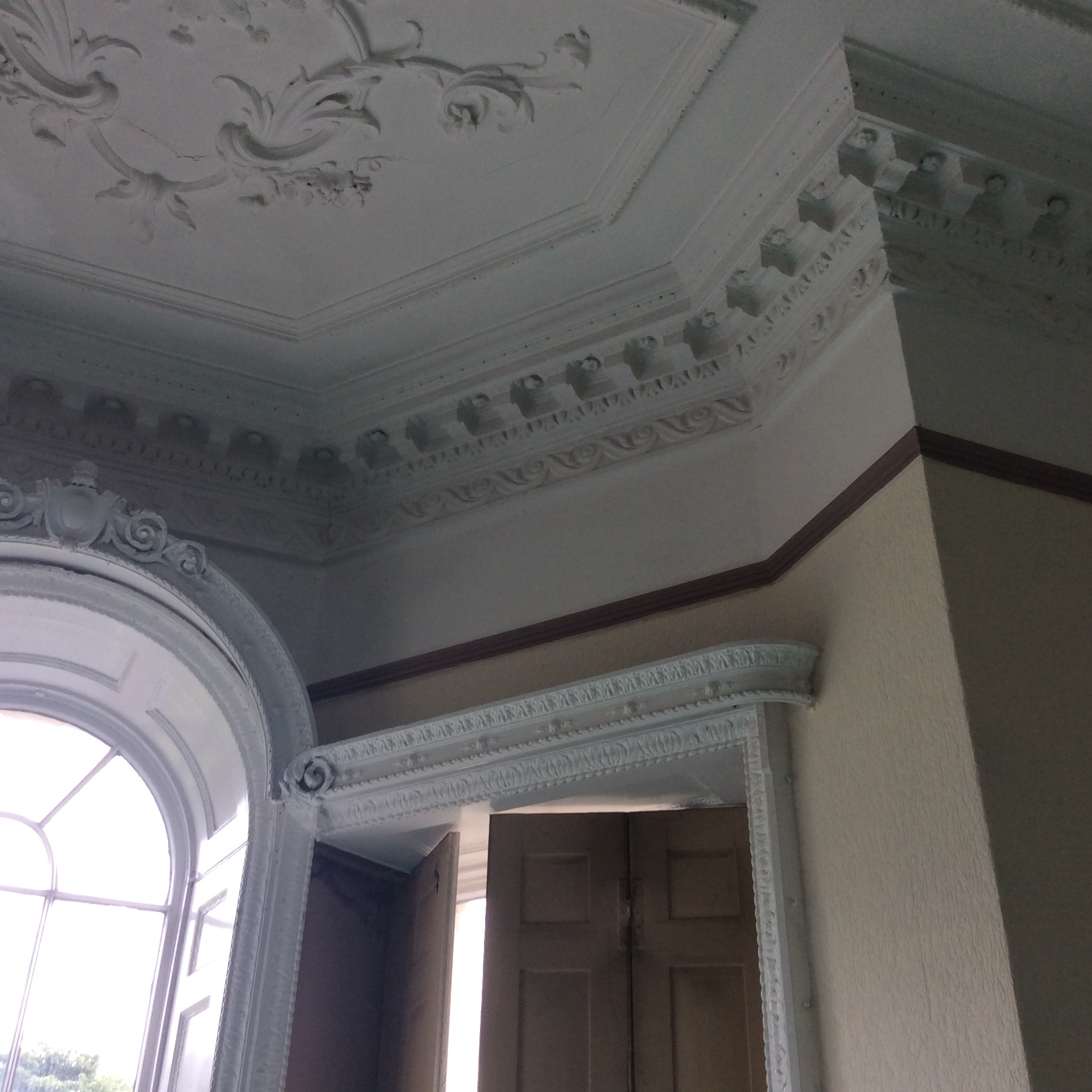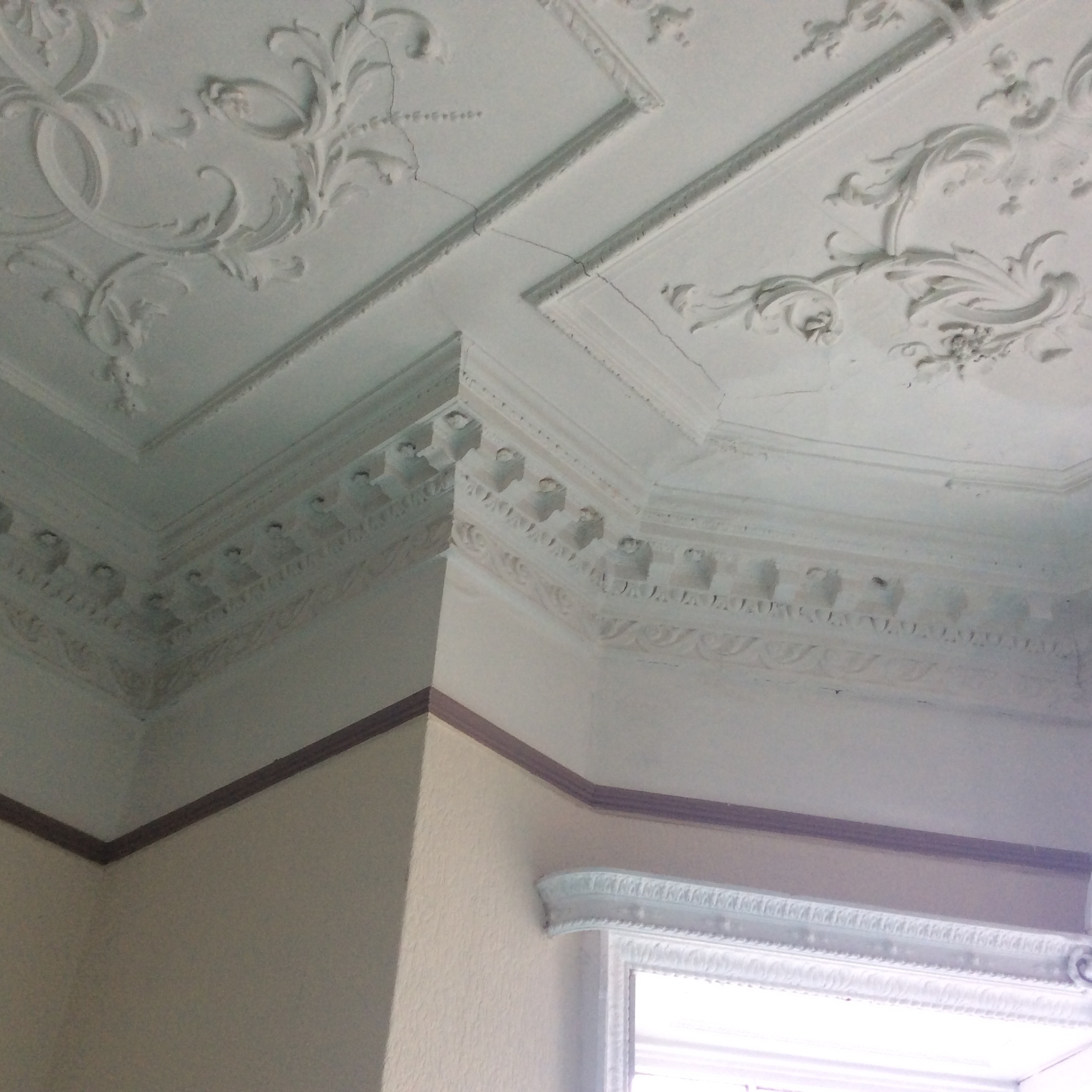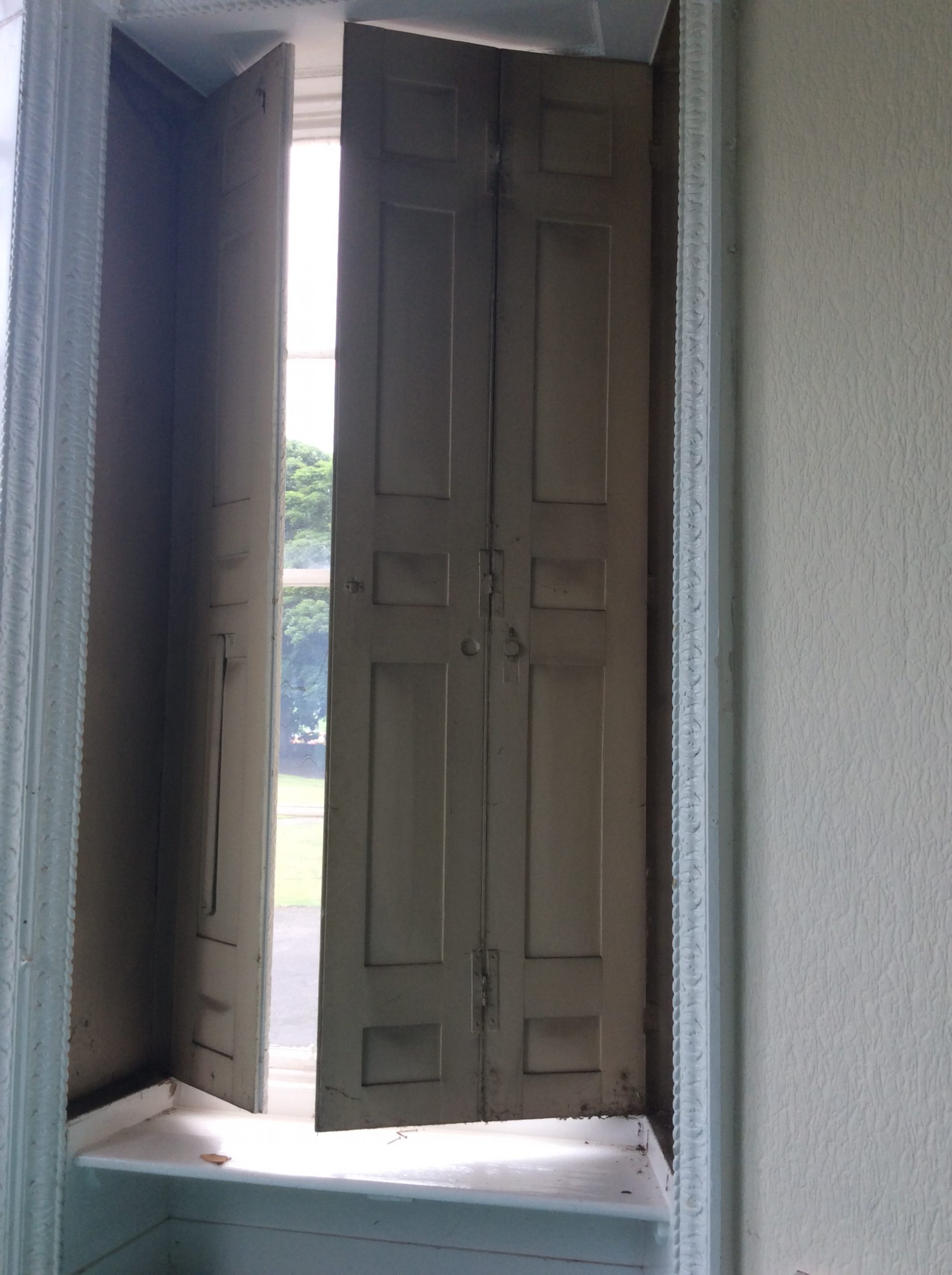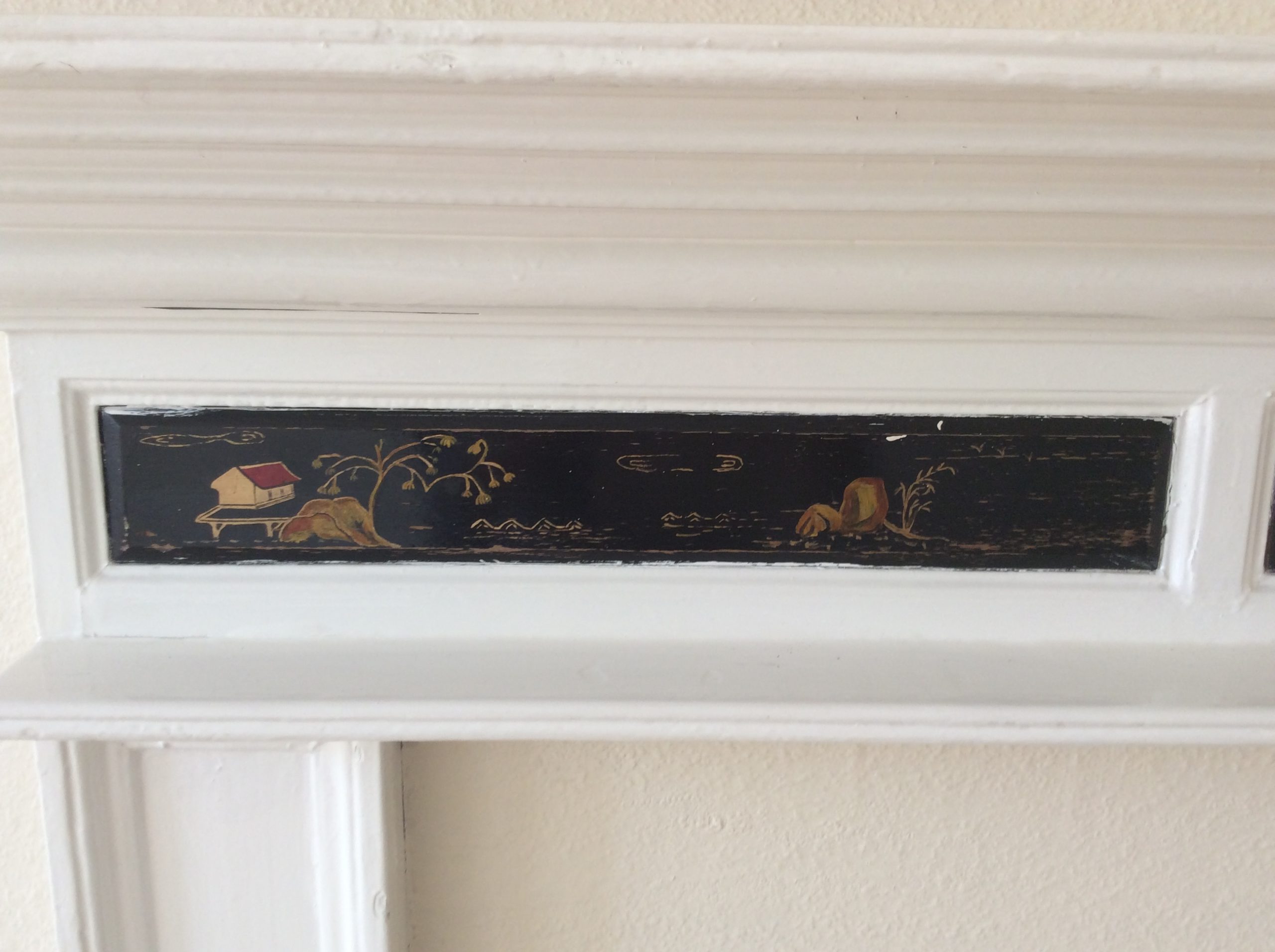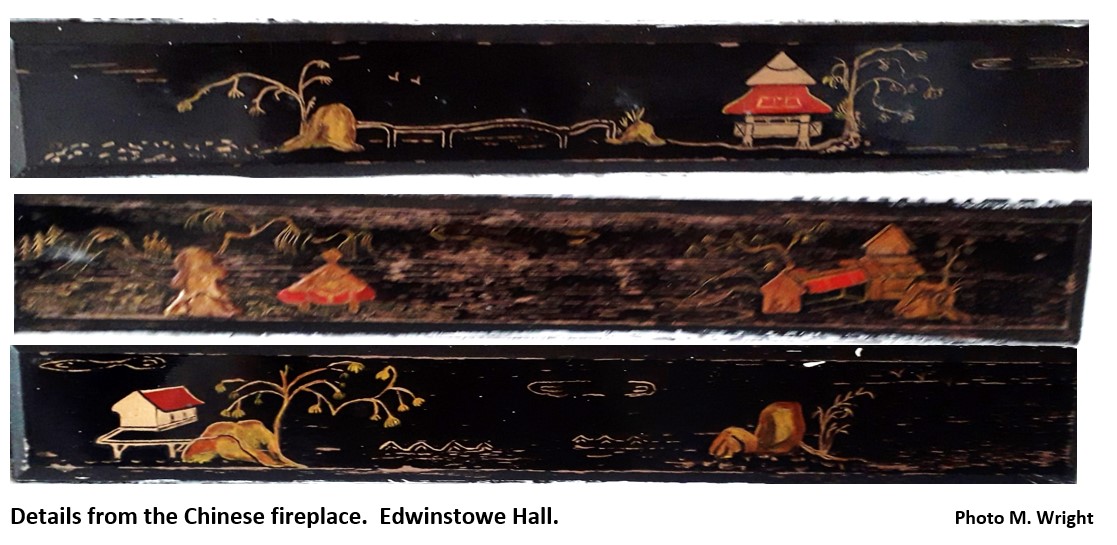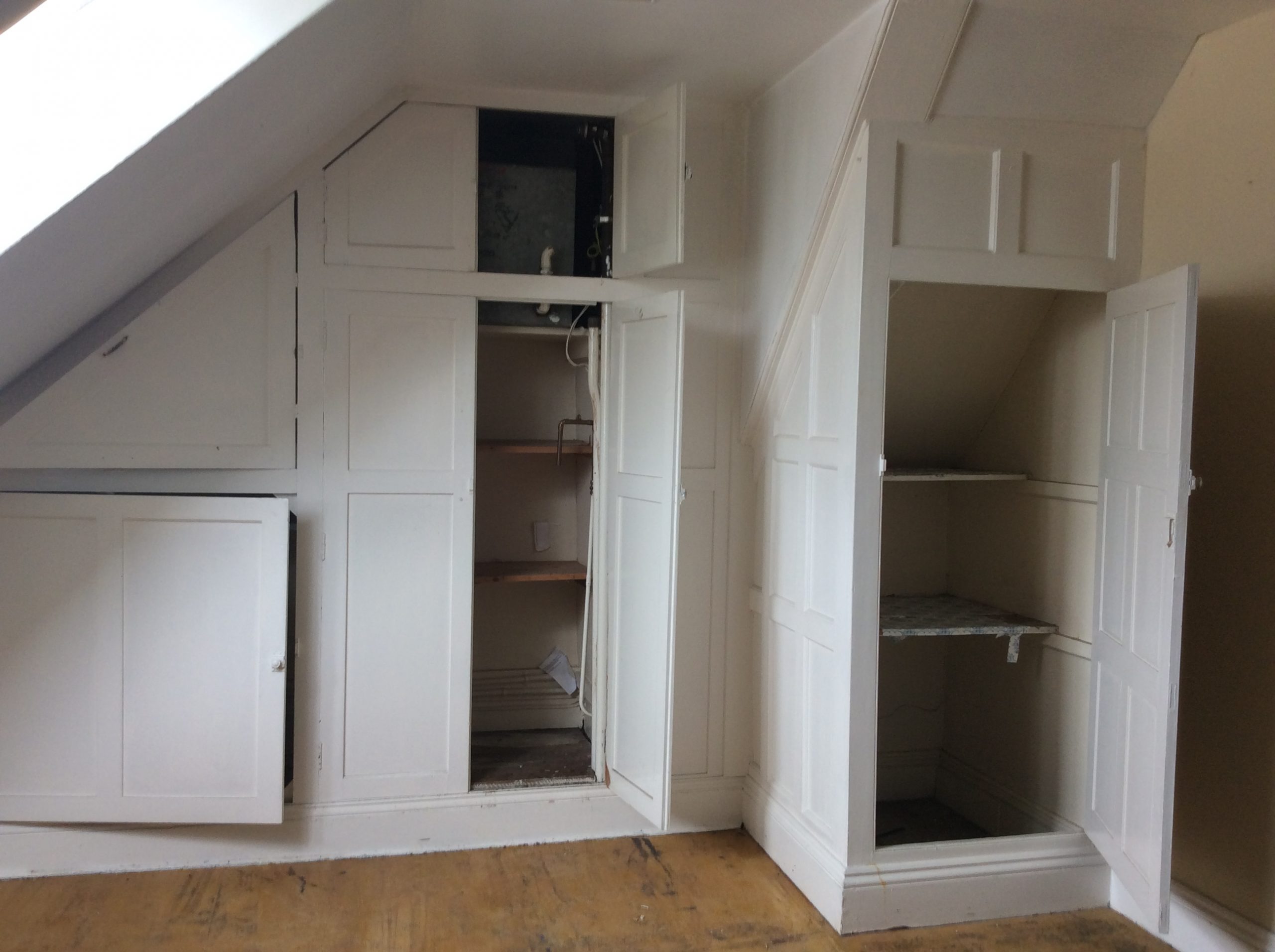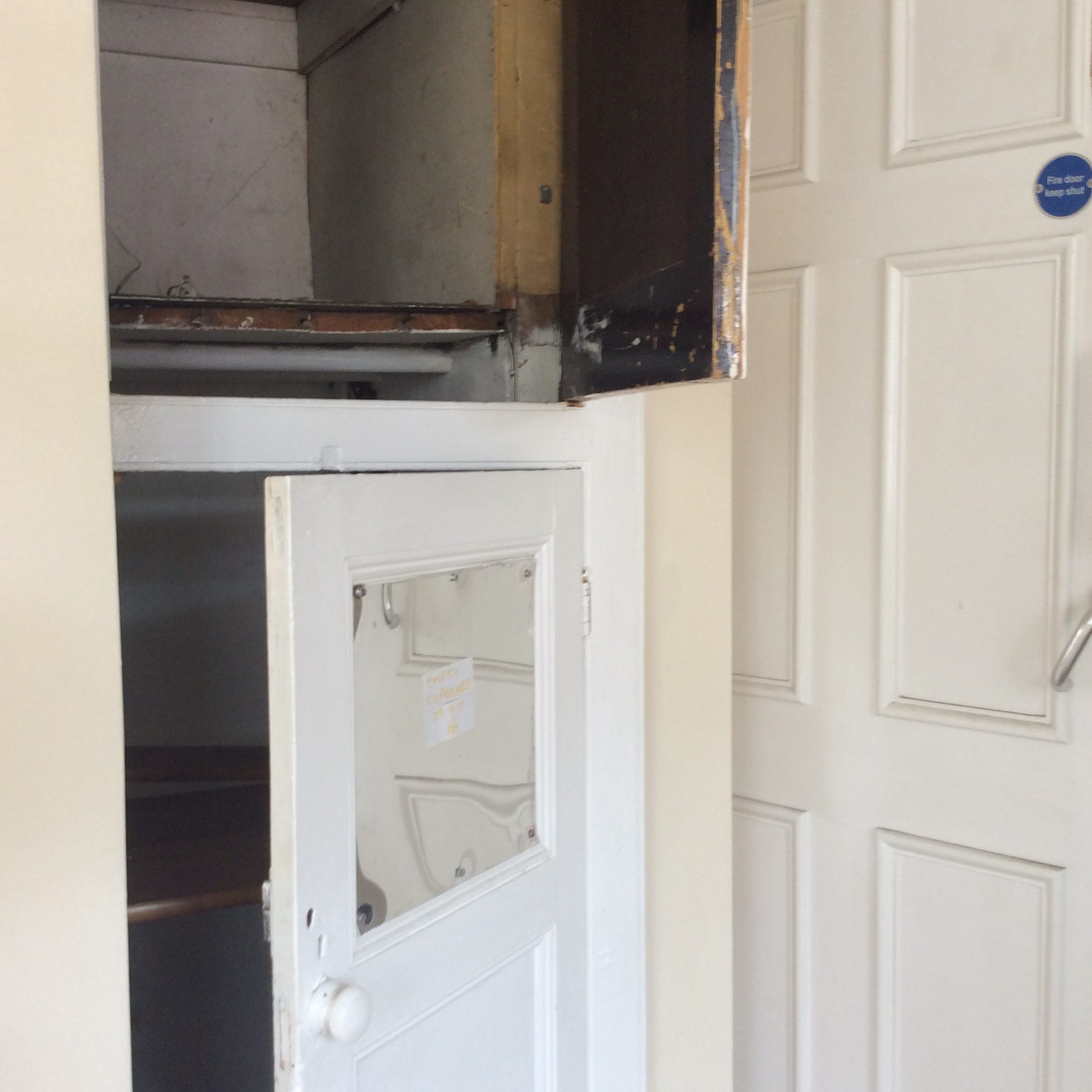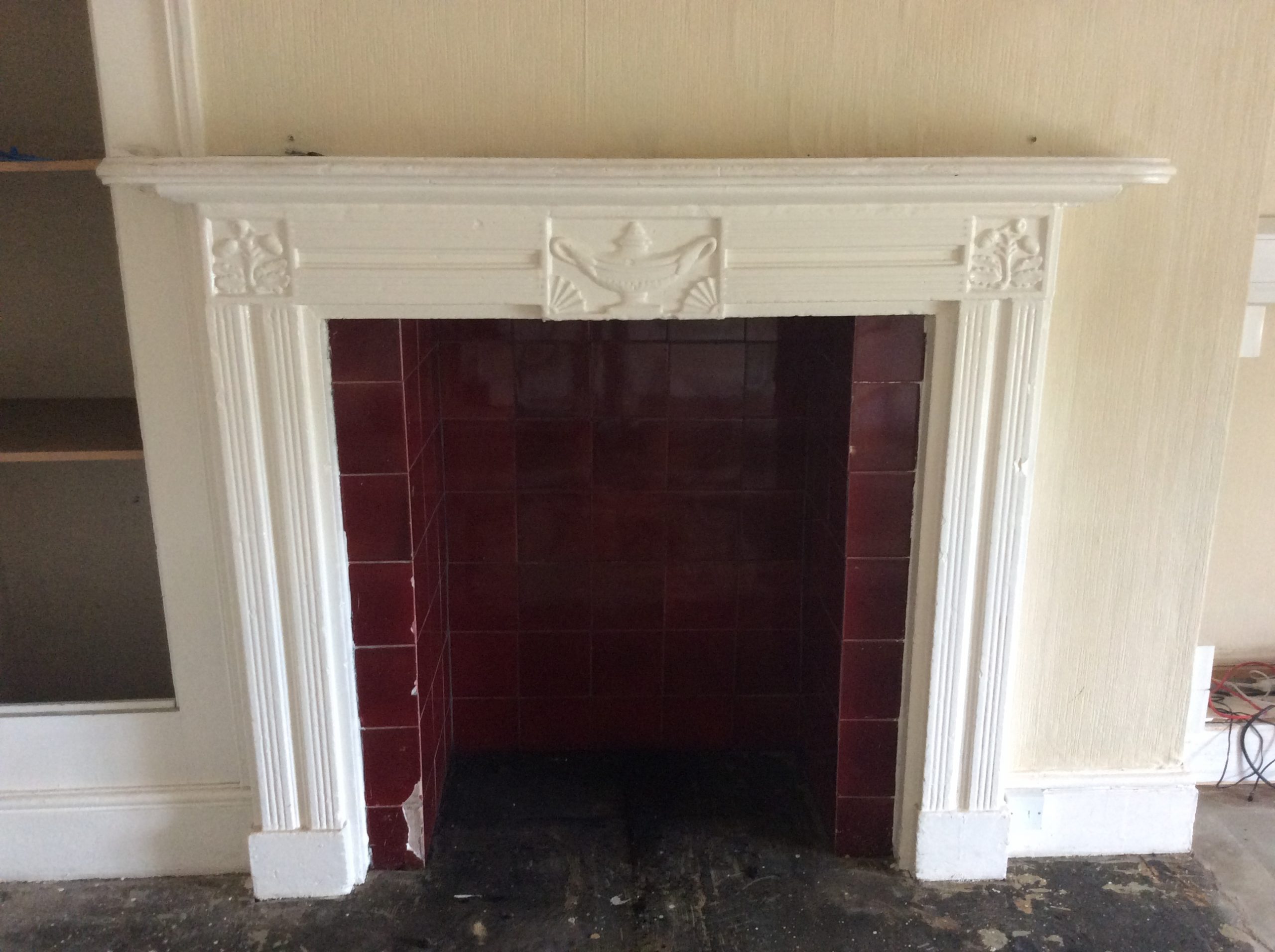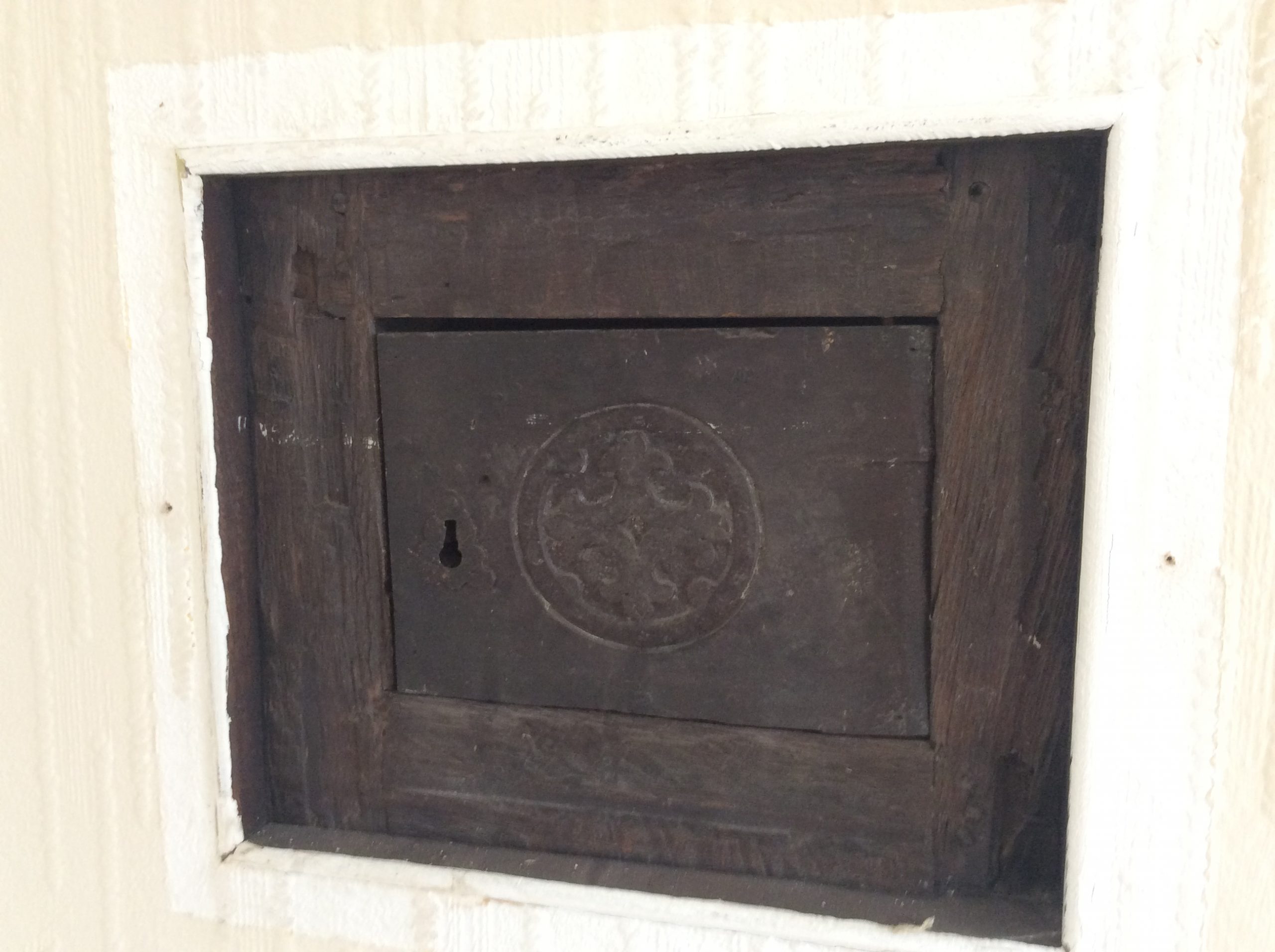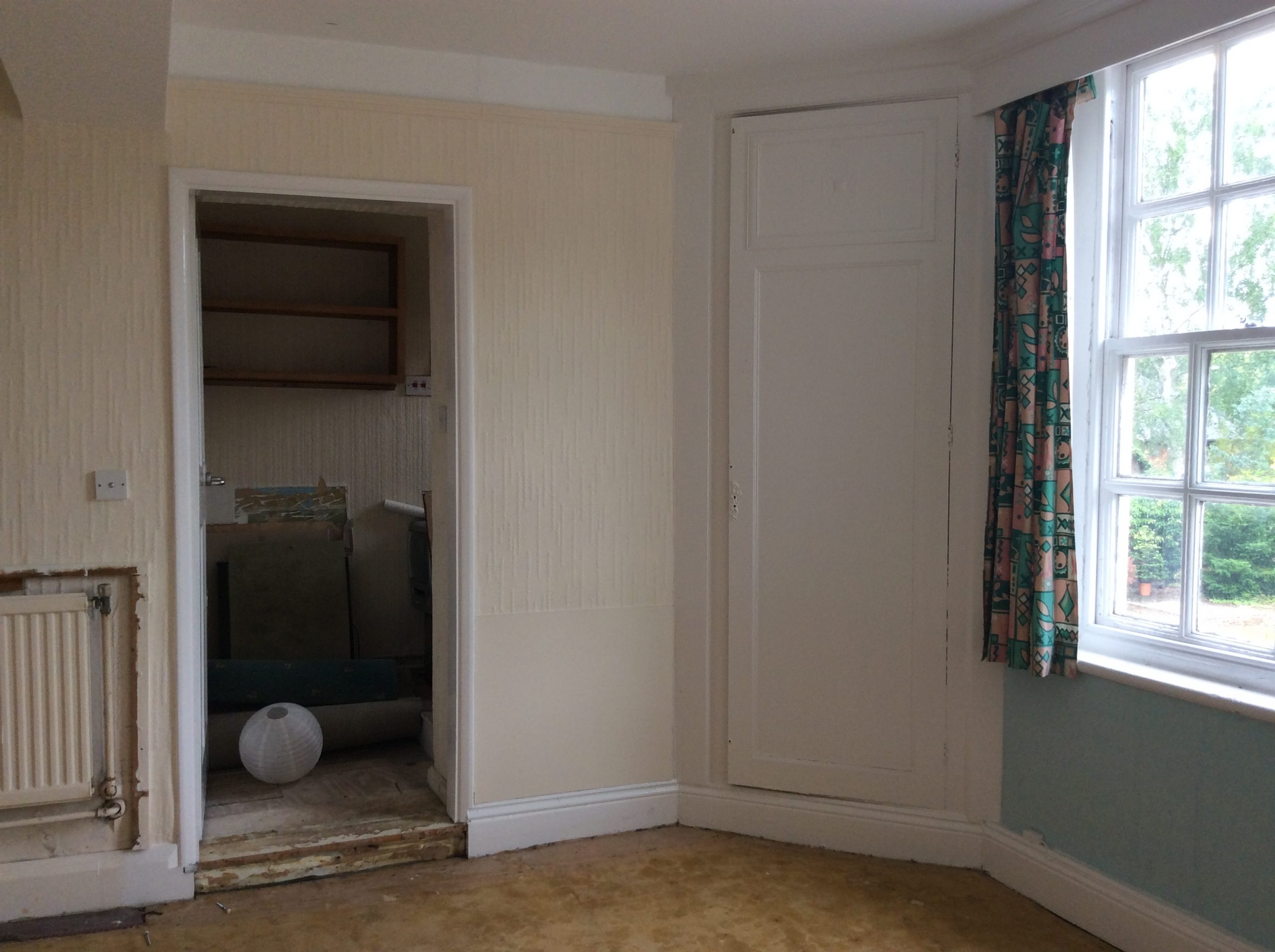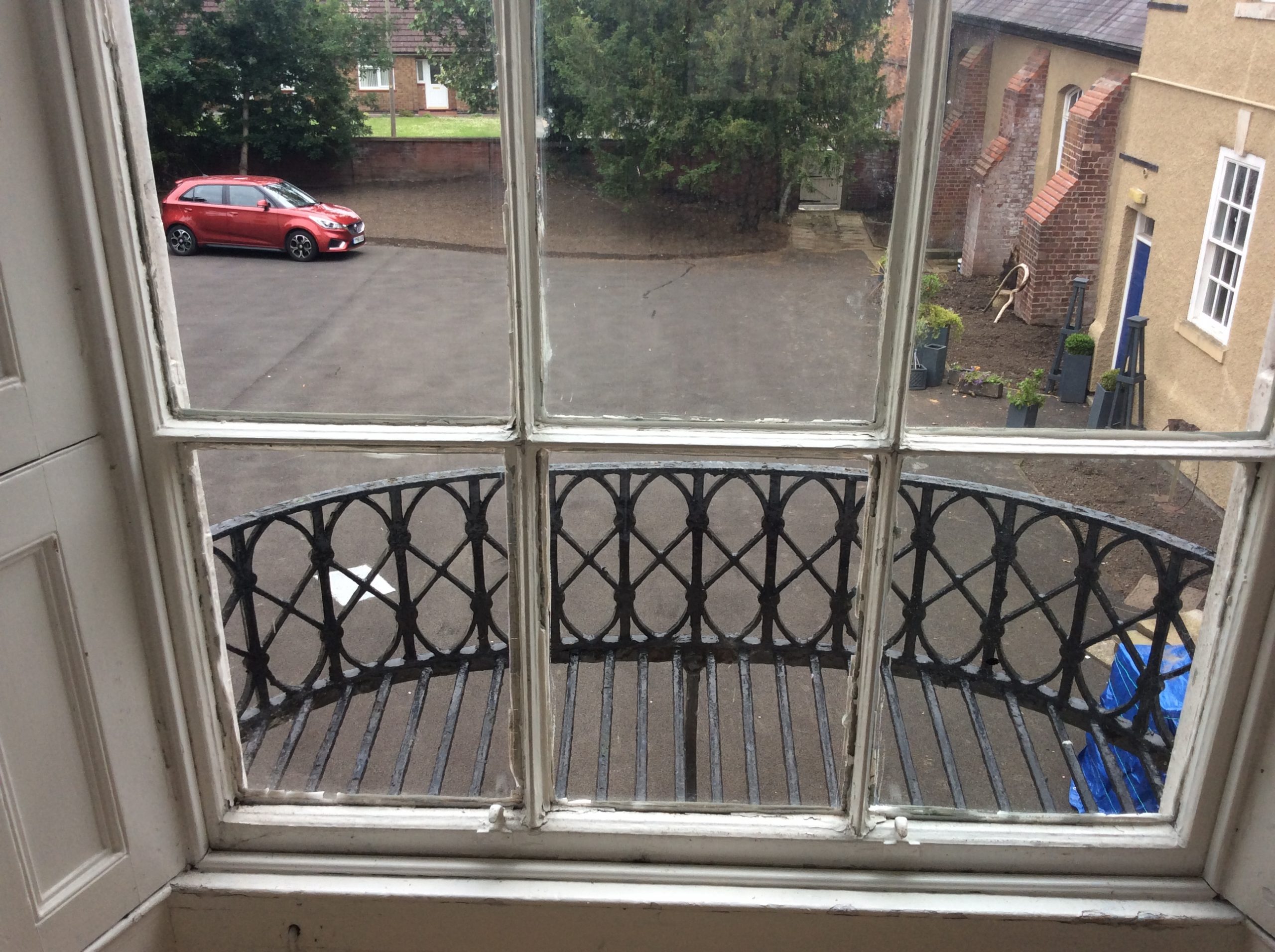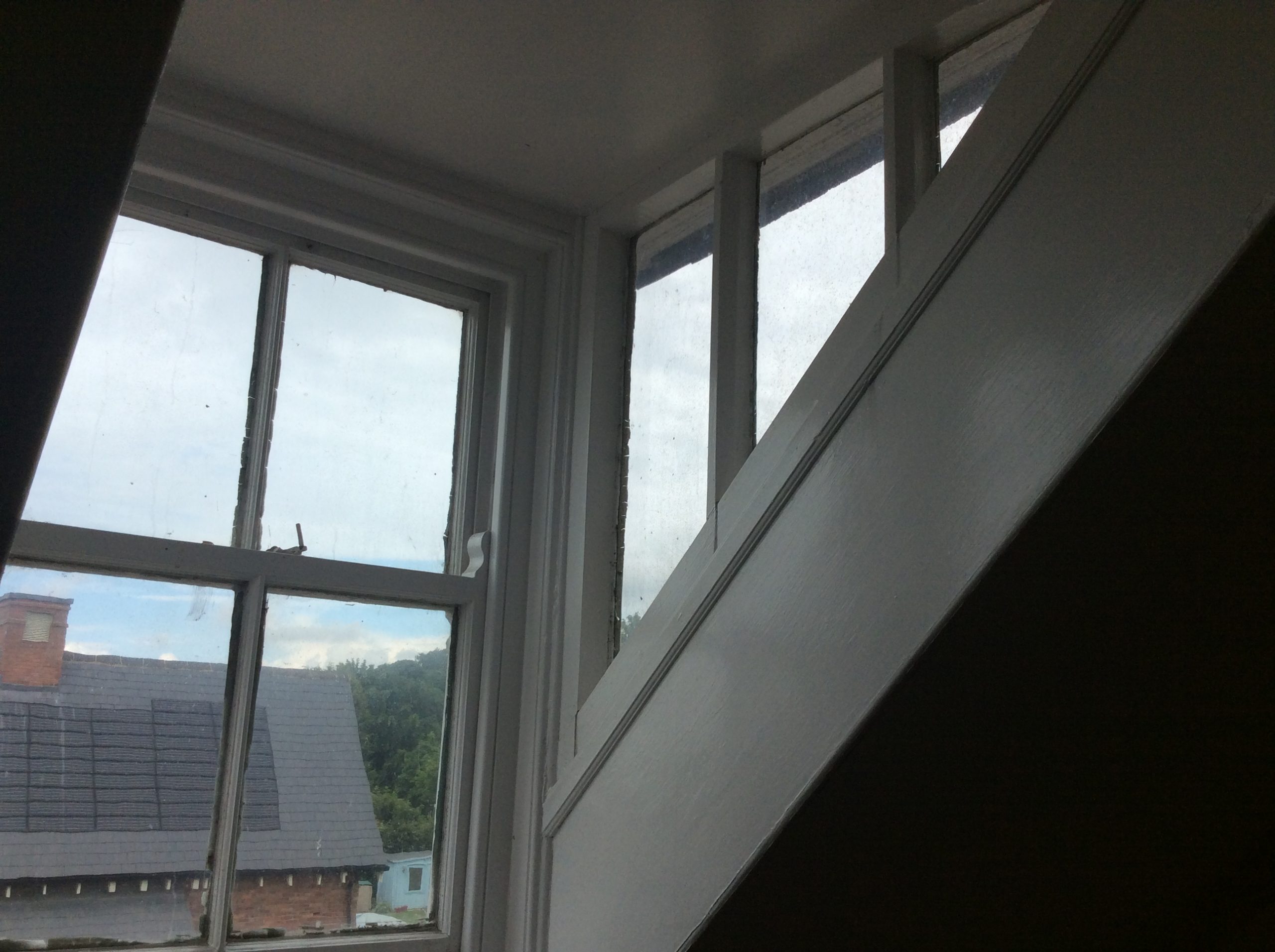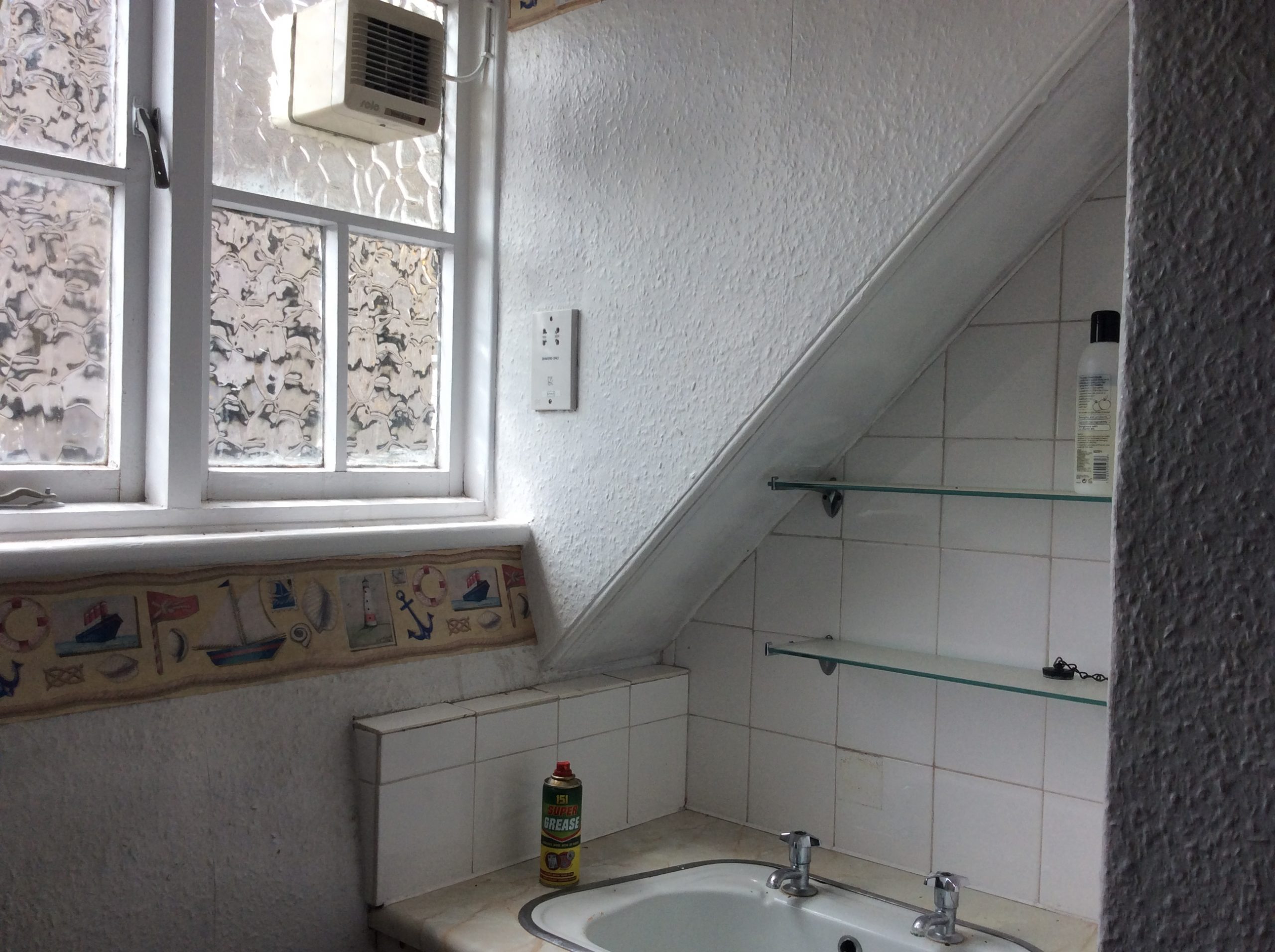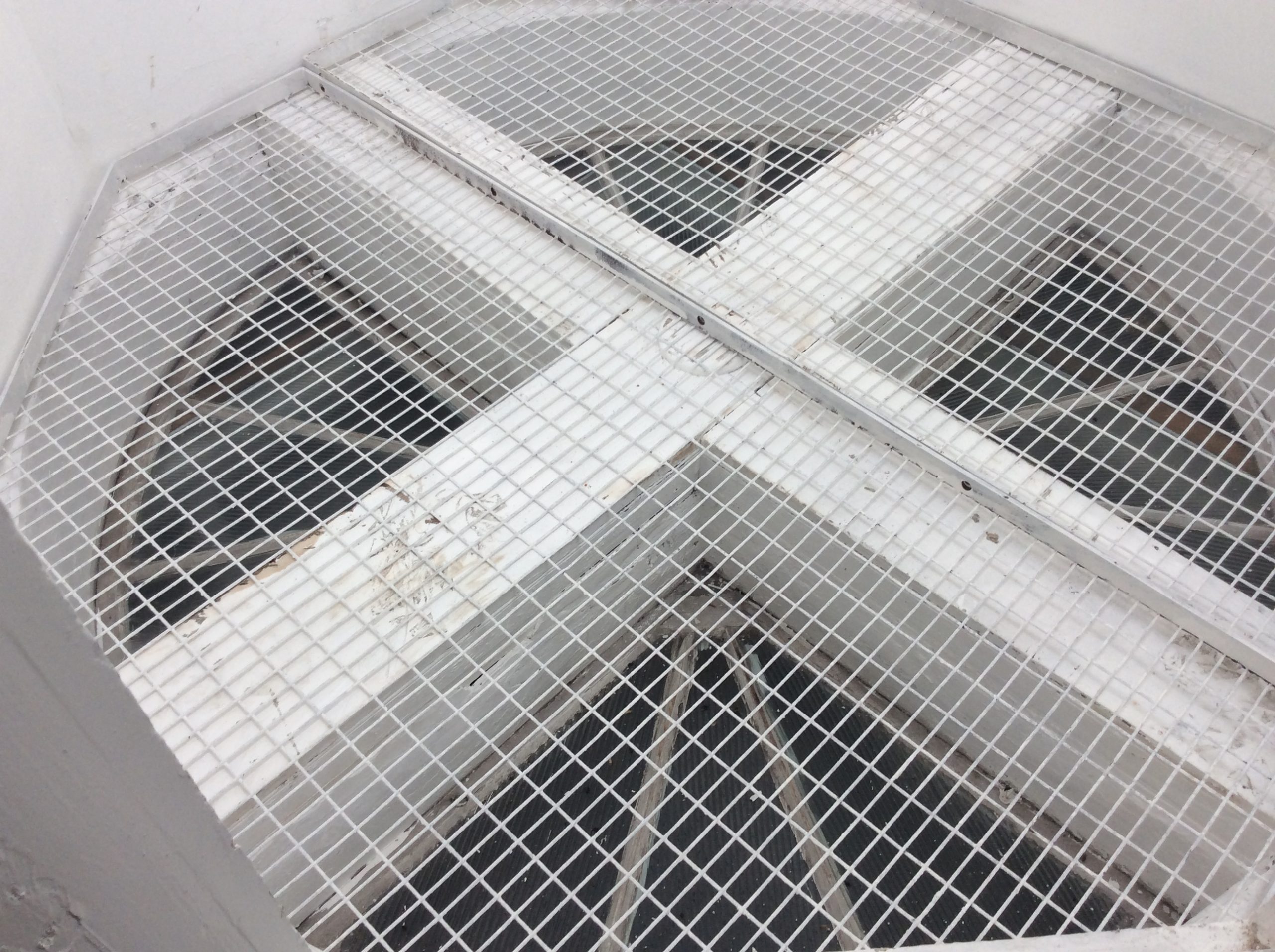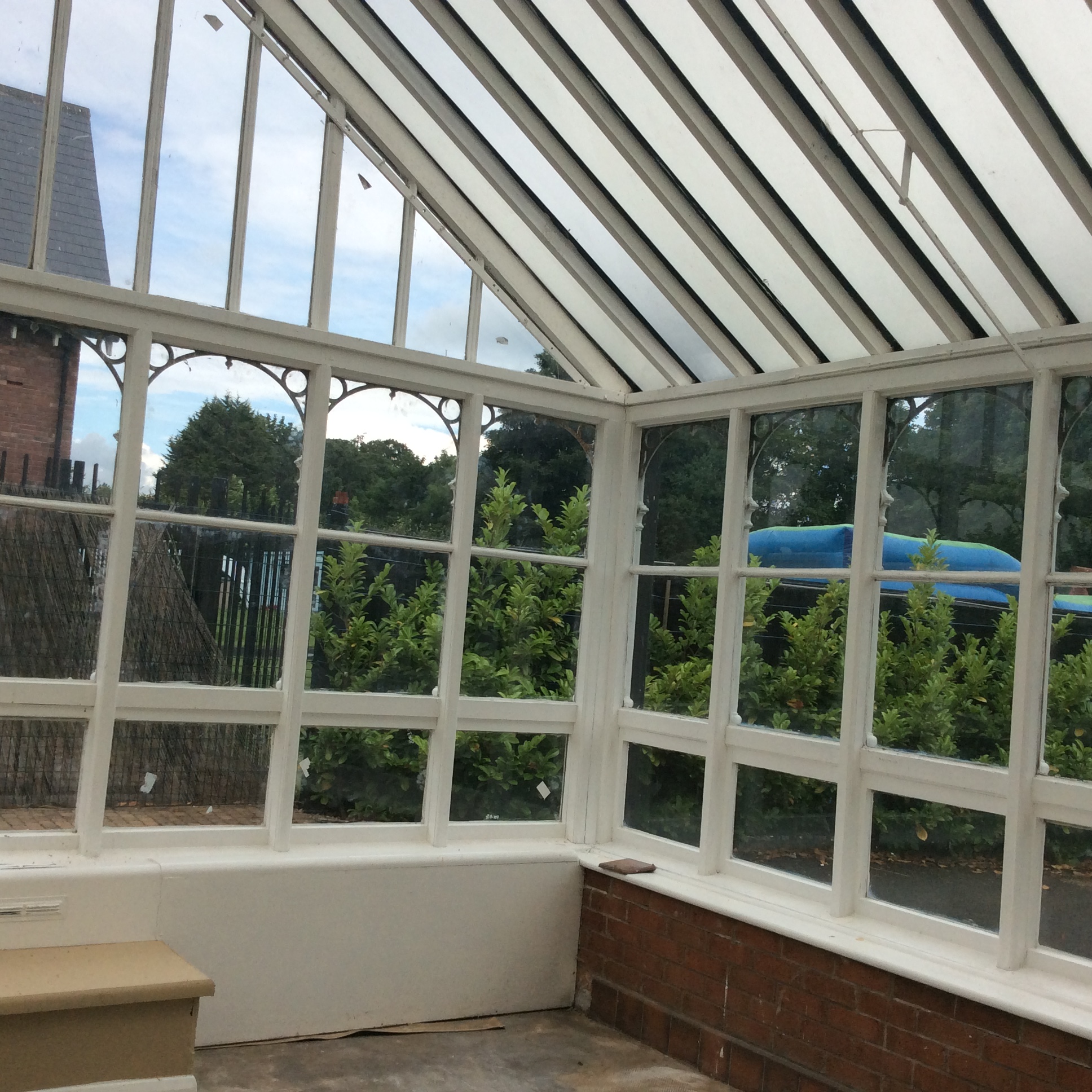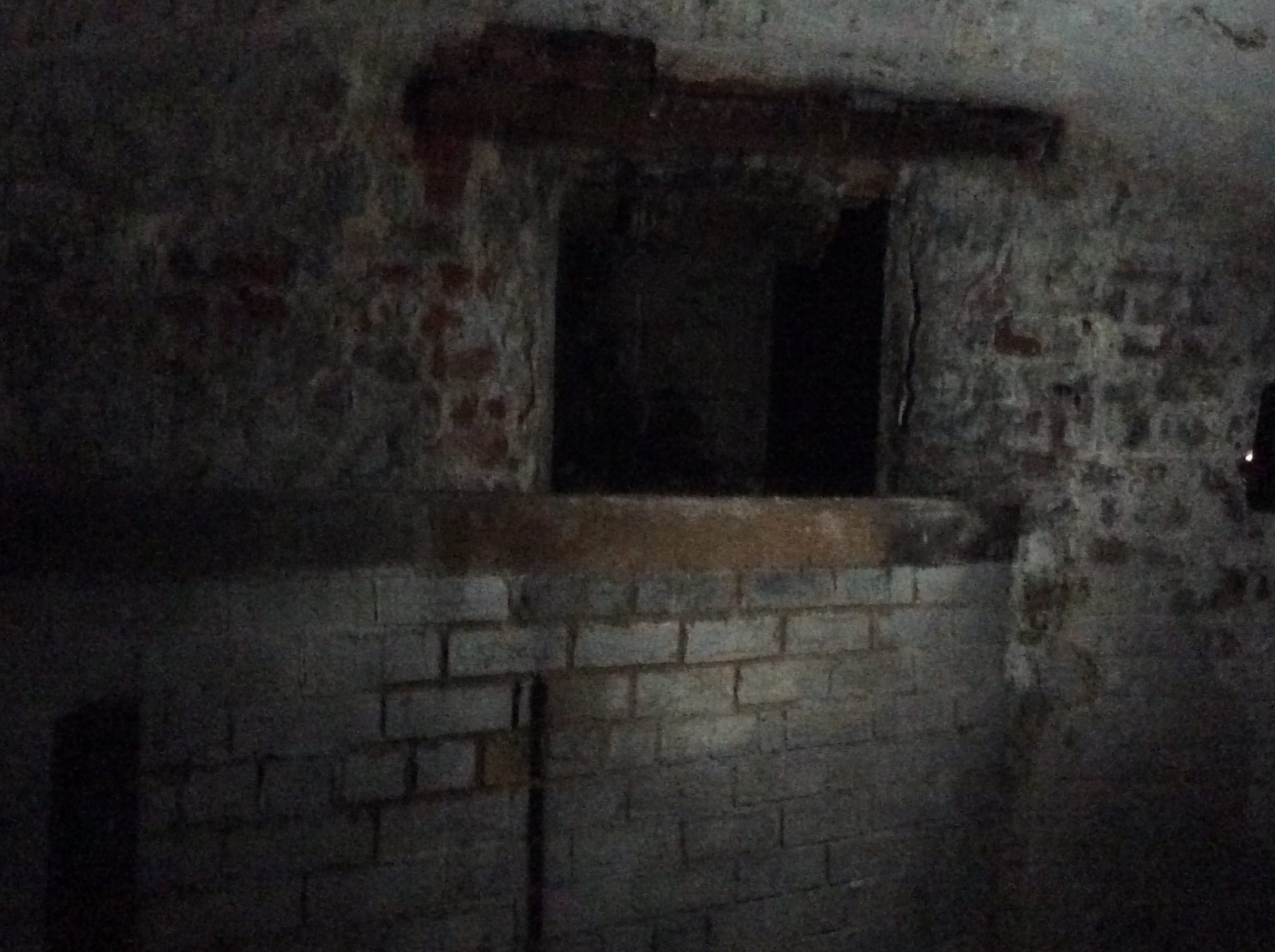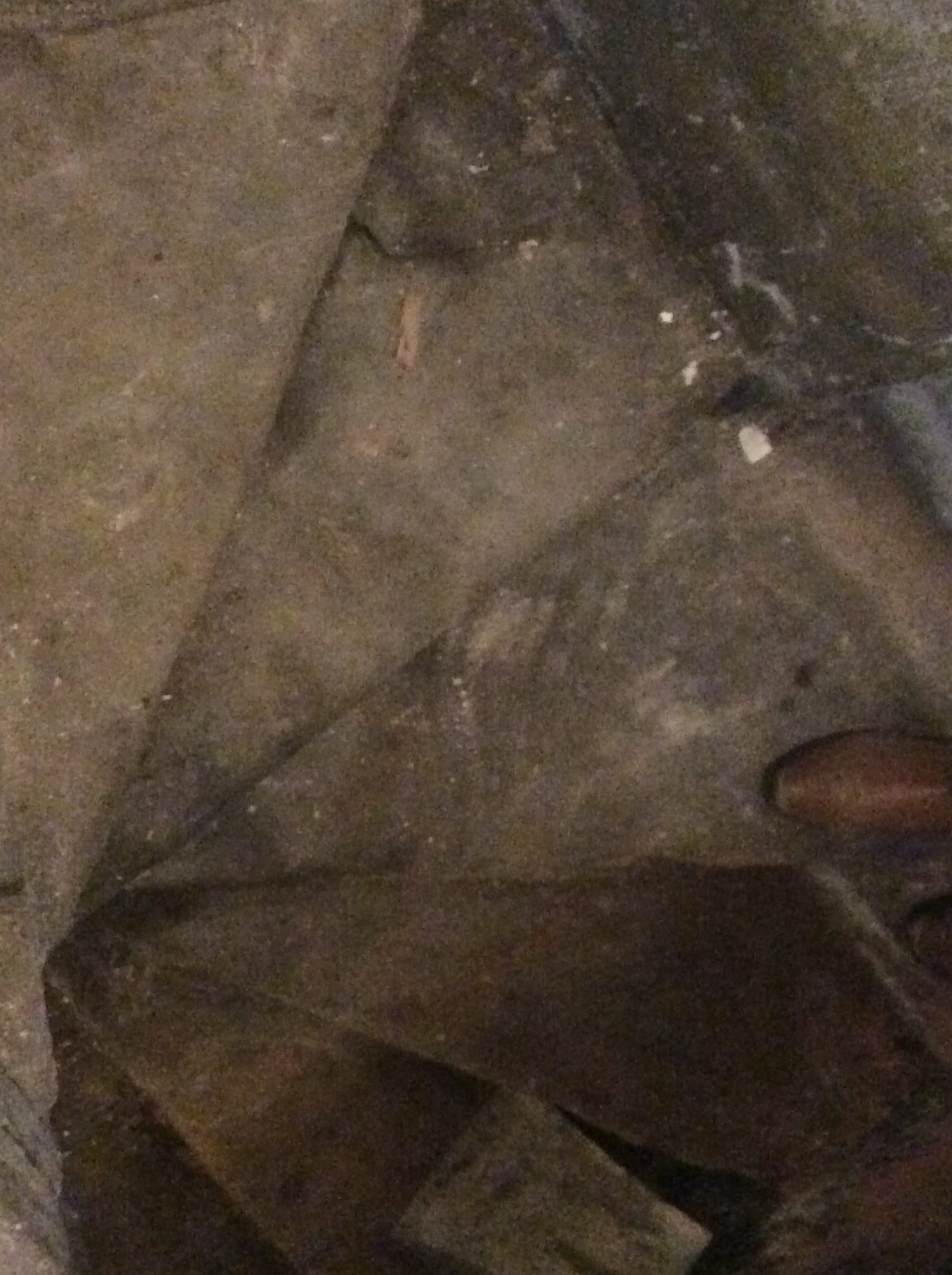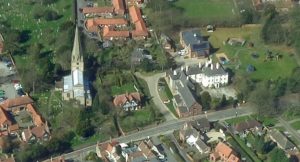
Edwinstowe Hall 2018
Before the Hall was built –
Edwinstowe was divided into two portions. The higher village, Edwinstowe ‘on the Hill’ and the Lower village by the River Maun, Edwinstowe ‘by the Water’. In 1327, William, son of Ralph-of-the-Hill of Edenstowe is said to have resided where the hall now stands.
In 1332, there were 27 families listed in the village. Some following eviction from Rufford and Cratley by Rufford Abbey who sought to increase pasture for sheep due to the pre-‐Black Death growing wool trade.
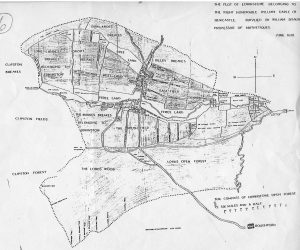
This early map, dated 1638, shows no hall but the size of the village and the position of the church. The inclosure (Free Land) identifies Mediaeval three-field system.
The Hall was built about 1702 on land owned by the Duke of Newcastle. The stables and out-buildings were built after 1740. The village had grown significantly over the previous 100 years.
The hall was modernised in the 1750s and Pevsner scholar of the history of art dated the drawing room ceiling to 1751.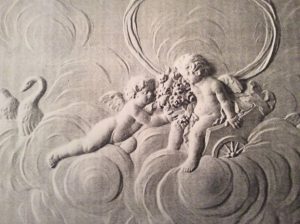
The ceiling today, is beautifully preserved and the detail is crisp and clear.
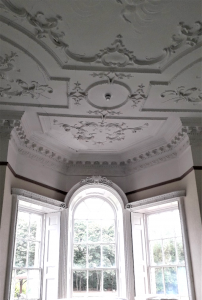
Ceiling and window with original shutters – Acknowledgment M Wright
The Hall, in 1770, like many other buildings in the area, would have to have paid Window Tax. Some houses in the village blocked up windows to save money. Documents show that the owners of the Hall did not pay the tax, possibly as it was a rented property. At this time a new saying was coined, ‘Daylight Robbery’.
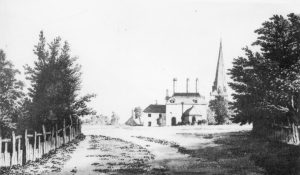
Etching 1790
By the early 1800s the Hall had increased its lands to include most of the Free Land. Wings to the main house and outbuildings had also been added.
 The Scarboroughs had occupied the building since the mid 18th century.
The Scarboroughs had occupied the building since the mid 18th century.
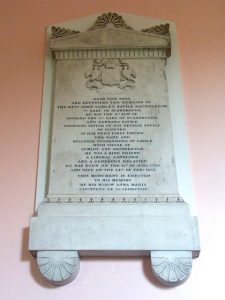 In the mid 1800s, the Rev. Lumley (Earl of Scarborough) lived at the hall, leased from the Duke of Portland of Welbeck Abbey. After this, it passed into the hands of Earl Manvers of Ollerton Hall. Lumley then became 7th Duke of Scarborough, later, he inherited Rufford Abbey but never lived there. The Hall is listed at that time as having ‘pleasure gardens, stables and a kitchen garden’.
In the mid 1800s, the Rev. Lumley (Earl of Scarborough) lived at the hall, leased from the Duke of Portland of Welbeck Abbey. After this, it passed into the hands of Earl Manvers of Ollerton Hall. Lumley then became 7th Duke of Scarborough, later, he inherited Rufford Abbey but never lived there. The Hall is listed at that time as having ‘pleasure gardens, stables and a kitchen garden’.
.
Acknowledgement Wikipedia
Then over the years it was let to various gentlemen.
-
1858 Mr. F. Bryon
-
1862 R. H. Walpole .
-
1863 H. Cunliffe (Census in 1871 shows these residents) – Henry Cunliffe Shaw 37, Geraldine 31, Edith Mary 6, Laura 5
Their staff included:
Mary Gibson – Cook
Annie Calvert – Maid
Mary Jones – Nurse
Sarah Ellison – Housemaid
John Webber – Butler
William Webber – Footman
Robert Jones – Groom.
- 1874 John Burrows
The hall was advertised for rent in, ‘The Field, Country Gentlemen’s Newspaper’ on the 10th of May 1884.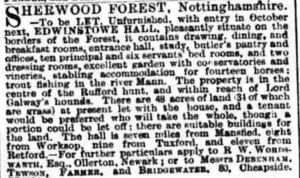
The next resident was James Fane Alexander – born 1846. He married in 1884, Aurea Otway Mayne born 1860 in Aurangabad, India. Her father was a distinguished Major of the 17th Lancers. Their three sons were born at the Hall. Paul and William, rose to high army rank. Charles became a Rear-Admiral. Aurea lived at the hall until 1912. (See Alexander Family in People/Families section)
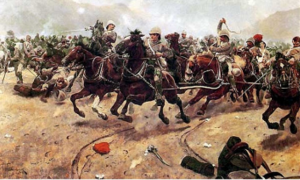
Acknowledgement Wikipedia
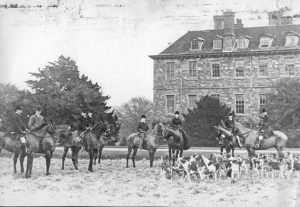
The Alexander Family at the Rufford Hunt
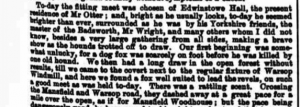
‘The Field, Country Gentlemen’s Newspaper’ on the 19th of March 1881 reports that the Rufford Hunt started at the hall.
Rufford was one of the 3 main hunts in Nottinghamshire. Hunting took place in Sherwood Forest and the land around Clipstone. In 1667 the hunt moved to Sandbeck Hall. In the 1700s the Earl of Scarborough, Hon. Richard Lumley, became Master of the hounds. In 1788 he kept his hounds at Rufford. In 1840 new kennels were built. Later George Saville Foljambe took over the pack. In 1900 the Rufford pack moved to Wellow.
Burglary at Edwinstowe Hall April 1886:
Reported in the ‘Mansfield Reporter’ an alleged robbery at the hall. The butler and gardener were brought before Magistrates. This case had excited considerable interest in the neighbourhood of Edwinstowe & Worksop and was heard yesterday at Worksop Police Court . Allegedly a quantity of silver was stolen by a notorious gang of burglars.
At Newark & Retford Quarter Sessions. Actually, Thomas & Meadows were on bail for stealing 4 shirts, 37 collars, 2 pairs of socks, 22 lbs of candles, 14 lbs. of soap, 4 bottles of blacking – goods of James Alexander. Mr. Appleton prosecuted & Mr. H. Y. Stanger defended. Mr. Stanger stated that there might have been irregularity in these proceedings, but there was no felonious intent.
The jury returned a verdict of Not guilty.
James died in 1891 aged 45 in the Bahamas. His body travelled on the White Star Line Adriatic. A luxury floating hotel.
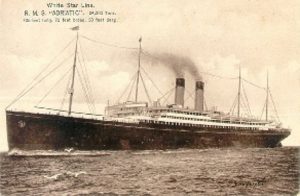
Acknowledgement Wikipedia
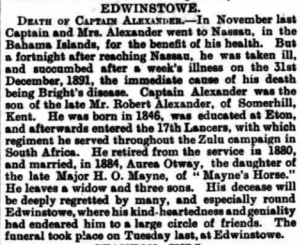
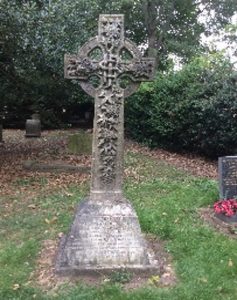
Grave of James Fane Alexander & his wife Aurea Otway Mayne.
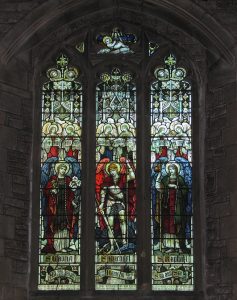 This window was placed here by Aurea – 23rd June, 1869.
This window was placed here by Aurea – 23rd June, 1869.
Subject – Archangels: St. Michael, St Gabriel and St. Raphael (Health & Healing & travel) Created by the glass works – Whitefriars, James Powell & Sons of London. In memory of Capt. James Fane Alexander of the 17th Lancers.
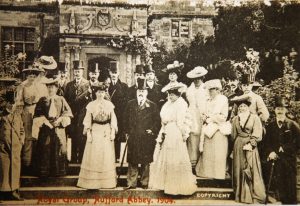 A party from Edwinstowe Hall were guests when the Prince and Princess of Wales visited Welbeck Abbey in 1896. Mrs. Alexander wore white satin with triple frilled sleeves of deep crimson, a tiara of diamonds and carried a magnificent bouquet of scarlet blossoms.
A party from Edwinstowe Hall were guests when the Prince and Princess of Wales visited Welbeck Abbey in 1896. Mrs. Alexander wore white satin with triple frilled sleeves of deep crimson, a tiara of diamonds and carried a magnificent bouquet of scarlet blossoms.
In 1897, she married Major Ralph Henry Fenwick Lombe. The Lombes rode to hounds and entered horses in equestrian events. He became a Justice of the Peace until he moved in 1911, to Grafton Manor, Northants.

30 OCT 1897 EDWINSTOWE HALL PLATE THEFT
1901 Census, Mrs. Aurea Lombe (formerly Alexander) had her late husband’s mother, Mrs. Julia Alexander living with her.
She gave Aurea an embroidered fire-screen as a wedding present in April 1899. Designed by William Morris.
Memorial to Julia Charlotte Alexander in St. Mary’s church. After her death she left the sum of £58,000.
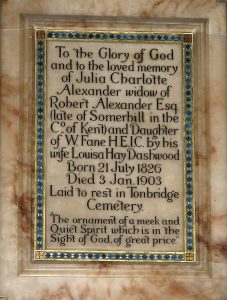
In 1899, the Sheffield Daily Telegraph reported an accident involving Aurea who was driving her pony & trap down High Street. She was not seriously hurt.
“Yesterday, Worksop Petty Sessions, Wm. Challoner was charged with furious driving in Edwinstowe, on May 30th.—The evidence of Mrs. Lombe, wife of Major Lombe, Edwinstowe Hall, was that the defendant was standing a dray unmercifully thrashing the horse, while he was galloping up the Main (High) Street Edwinstowe. Mrs. Lombe was driving and being unable to get past, turned her pony round, when the defendant ran into her trap. The shafts struck the pony just behind opposite direction the collar, and dragged it and the it and the trap for a considerable distance before defendant’s horse was pulled up.—The case was adjourned for fortnight Published: Thursday 15 June 1899
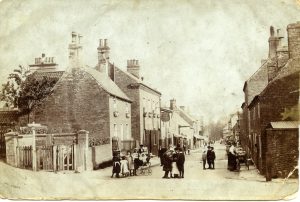 Newspaper: Sheffield Daily Telegraph
Newspaper: Sheffield Daily Telegraph
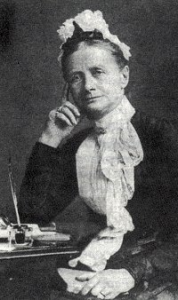 This is Cecil Francis Alexander a relative born in 1848 – Died 1895. She was married to the Bishop of Derry. A window to her memory is in Derry Cathedral, also made by Powell of Whitefriars Glass in the same Gothic style as the Archangels window.
This is Cecil Francis Alexander a relative born in 1848 – Died 1895. She was married to the Bishop of Derry. A window to her memory is in Derry Cathedral, also made by Powell of Whitefriars Glass in the same Gothic style as the Archangels window. 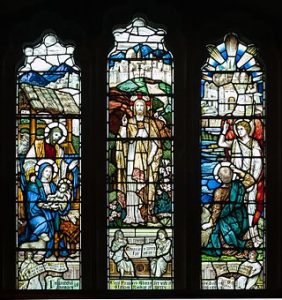
This window commemorates the hymns she wrote.
This included: Away in a Manger, There is a Green Hill Far Away, All Things Bright and Beautiful, Once in Royal David’s City.
Edwinstowe Hall hosted many ‘Horticultural Shows’. They were judged by the Head Gardeners of Edwinstowe House and the Hall. In 1894, it included flowers, produce, foals and athletic sports. It gives us a glimpse of life in 1895. A newspaper advertisement by Mrs. Fane Alexander ‘recommended’ a plain gardener, praising his skill for growing peaches, grapes, and understanding pigs and stock. E. Meadows was head gardener.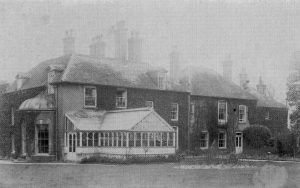
Edwinstowe hall C1906
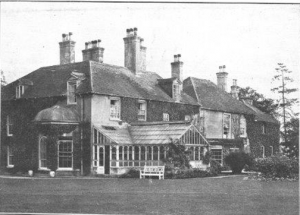
Edwinstowe Hall 1919 – a Few changes
One of these school children was Winifred Meadows (reference school log book) she was daughter of the Gardener, Meadows, from Edwinstowe Hall.
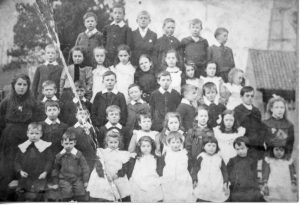
Edwinstowe School earliest photo 1900s
A very different looking photo from a few years later in 1911. Birthday party of Edith Cole nee Woodhead – Front Right. Another glimpse of life at that time.
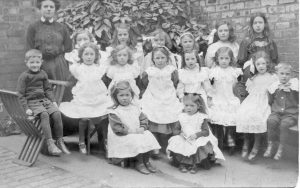
In 1912, following her marriage to Mr. Lombe, Aurea moved to Grafton Manor. After her death a large portion of her estate, £29,363, was bequeathed to her servants.
It was during this time ,1912, that Major Howard Tilney moved in. His rent was £227.20s p.a. He left in 1919.
Edwinstowe Hall in 1923 A Welfare Centre.
In a newspaper advertisement announcing the sale of Edwinstowe Hall by Lord Manvers in November, 1919, the hall was accurately described as a substantially built and commodious residence with extensive pleasure grounds, gardens and park-like grasslands, glasshouses and an excellent range of stables and motor-garages.
Clearly impressive, the Bolsover Colliery Company who were planning to sink a new mine on the outskirts of the village, acquired the hall and grounds from the 1st January, 1920, and, over a period of 3½ years, converted it into a Welfare Centre for the use of the various organisations which the company set up for its employees.
The Welfare Centre was opened in August, 1923, by the Duke of Portland who, in a formal ceremony, used a gold key to enter the refurbished hall, and then walked over to the dormitories which he opened with the same key.
In the same year the Prince of Wales (later King) visited the Hall 1923.
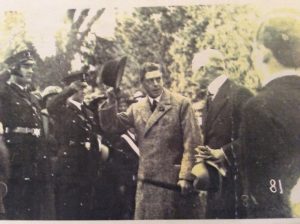
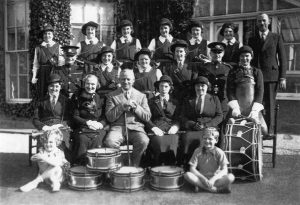
The Girls’ Brigade. Photo taken in front of the Hall, around 1938/39
Back row: ? ? Margaret Tagg, Margery Halfpenny, Gwen Freeman, ?
2nd row: ? Beryl Parker, Jean Newbury,? ? Lily Parker, Major Moncur
Front row: Gwen Richardson, Mrs. & Mr. TEB Young, ? ?
Children Diana and John Young
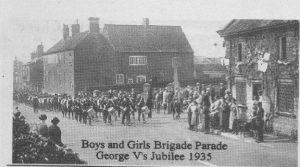 Companies of boys’ and girls’ brigades and ambulance divisions marched past a ceremonial platform, accompanied by massed brass bands and the Duke made a speech to the assembled throng.
Companies of boys’ and girls’ brigades and ambulance divisions marched past a ceremonial platform, accompanied by massed brass bands and the Duke made a speech to the assembled throng.
Tea was provided in the hall, in the dining rooms of the dormitories and in marquees.
The photograph is of a similar parade of the representatives of six colliery villages en route to Edwinstowe Hall on the occasion of George V’s Jubilee celebrations in 1935.
Acknowledgement Acorn magazine, Margaret Woodhead and Dennis Wood
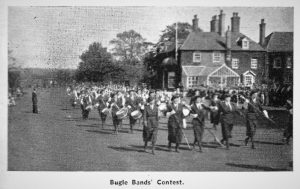
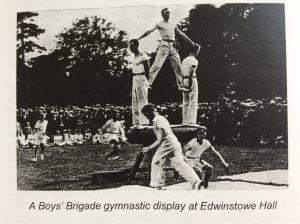
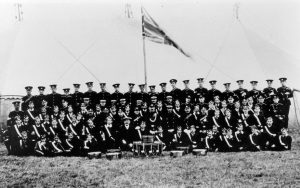
Boys Brigade at the Hall
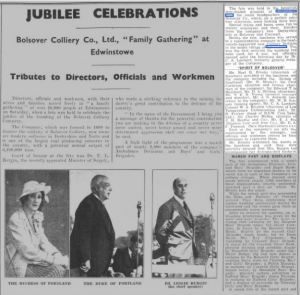
Jubilee Celebrations at Edwinstowe Hall 6th June 1939
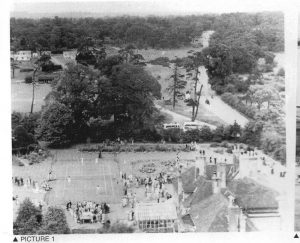
Edwinstowe Hall n.d.
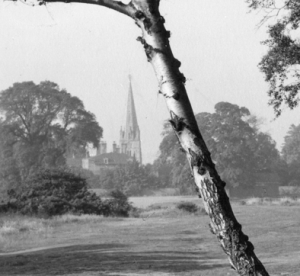
Edwinstowe Hall from the Forest
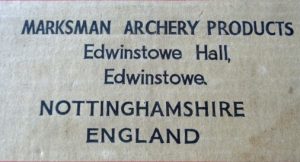 In the 1960s, the property was owned by Mr. Les Howis, an archery manufacturer. He later moved to the Harley Gallery, Welbeck. Below his advert in the Tatler
In the 1960s, the property was owned by Mr. Les Howis, an archery manufacturer. He later moved to the Harley Gallery, Welbeck. Below his advert in the Tatler
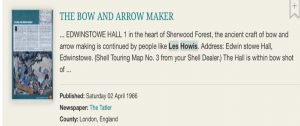
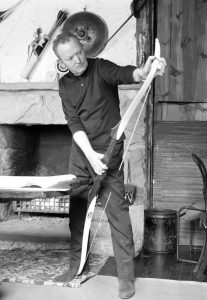
Les working in the hall. 1960s
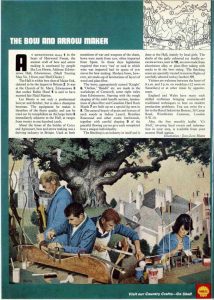
Edwinstowe Hall in 1967, when a new wing was added. The building became a NCC Social Services long-stay Community Home (A children’s home). Up to 20 children were catered for here. Later, it became a Children’s Respite Centre.
Edwinstowe Hall Fair 1980
Youth Club at Edwinstowe Hall produced a collage of the Upper Village
Inside the building that was used as the youth club.
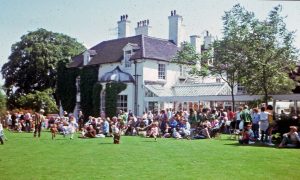
Edwinstowe Hall Garden Party 1981
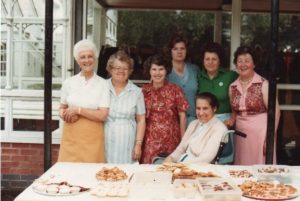
Edwinstowe Garden Party 1983
Below – St. Mary’s Church Victorian Garden Party, with help from the Miners Union. It was part of the weekend, celebrating the anniversary of the building of the present church.
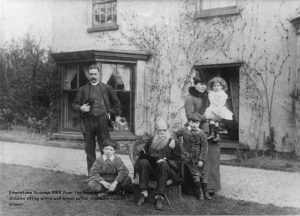 The Preacher at Evensong was Canon Percival Hayman, who had been in touch with EHS. His grandfather was E. Cobham Brewer. He brought the group portrait of his family outside the Old Vicarage for us to copy and use.
The Preacher at Evensong was Canon Percival Hayman, who had been in touch with EHS. His grandfather was E. Cobham Brewer. He brought the group portrait of his family outside the Old Vicarage for us to copy and use.
The Mulberry Tree at Edwinstowe Hall
We have all been round the mulberry bush, in imaginative play while singing the traditional nursery rhyme “On a Cold and Frosty Morning”.
Did you know, however, that the rhyme has its origin in the exercise yard of Wakefield Jail, where the prisoners walked around the mulberry tree planted in the middle?
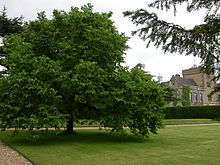 There was a listed mulberry tree in the spacious grounds of Edwinstowe Hall and, like several other trees in the gardens, it was reputed to be over 200 years old.
There was a listed mulberry tree in the spacious grounds of Edwinstowe Hall and, like several other trees in the gardens, it was reputed to be over 200 years old.
There are twelve species of mulberry trees, all of which are becoming increasingly rare in Britain with the disappearance of many large old gardens. The black mulberry (Morus Nigra) is the species most commonly cultivated for its fruit which is similar in shape to a blackberry and can be eaten raw. The leaves of the white mulberry are the food for silkworms.
Mulberry Tree wikipedeia
Edwinstowe Hall’s tree was a black mulberry with a rough-scaled trunk and heart shaped, toothed leaves. The tree, sadly, died many years ago.
Acknowledgement D. Wood Acorn Magazine
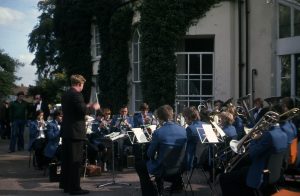
Edwinstowe Hall Colliery Band 1979
The Hall 2021 – another chapter as it becomes a family home again.
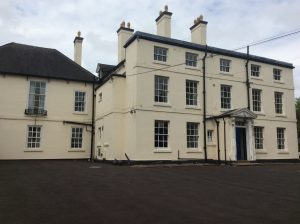
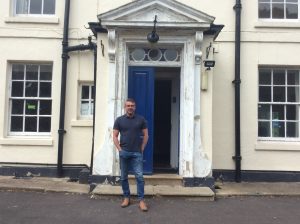
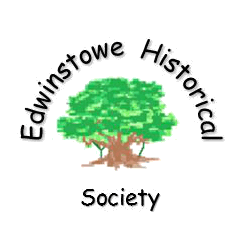 Edwinstowe Historical Society
Edwinstowe Historical Society